News archive

|
Congratulations Dr. Van der Wal!On 18 October, Tanne successfully defended her thesis as the fifth PhD student to graduate from the lab. It was a proper Dutch PhD defense, with a nice lekenpraatje prior to the start of the official ceremony and 10 stellingen (propositions) to accompany the thesis.
|
|
18 October, 2024 |

|
Weekend van de WetenschapWhat better way to spend a Saturday than to talk to the general public about how cool science is? Luckily, 5 October was the annual Science Park Open Day (part of the National Science Weekend or Weekend van de Wetenschap).
|
|
5 October, 2024 |

|
Nature reports on Lowlands ScienceIf you look closely, Joëlle can be seen on this photo accompanying the HTML version of a piece in Nature (for some mysterious reason the PDF version decided to cut her off at the elbow), which highlights the activities taken part at Lowlands Science.
|
|
3 October, 2024 |
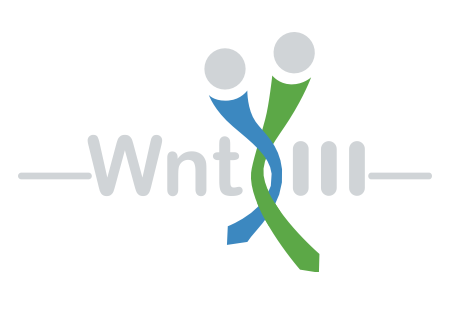
|
Two symposia in the midst of teachingIn the midst of the busiest teaching season, Thijs and Renée found (i.e. magically created) time to travel to Germany for science. |
|
30 September, 2024 |

|
Welcome JasperOn 1 September, Jasper started as a PhD student. He will split his time between SILS and AMOLF, as this is a joint project between our lab and the groups of Dr. Jeroen van Zon and Dr. Sander Tans - together we should combine the best of biophysics and mammary gland biology to tackle some unknowns in the area of branching morphogenesis and mammary gland development and differentiation. |
|
1 September, 2024 |
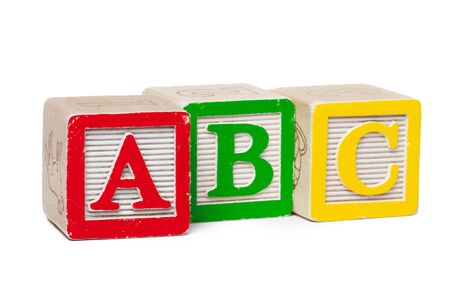
|
New faces in the labFor multiple reasons, website maintenance was not up to par in the last few months. As a result, our BSc and MSc students for 2023-2024 were only added once their internships were already finished. That does not mean that we were any less happy and excited to have them in the lab, however! |
|
18 July, 2024 |

|
Summer is here!Although June and July are always more busy than you remember with lots of grading and final presentations of the past and teaching preparations for the upcoming academic year, it is still a good opportunity to do something a little different. That includes journal clubs and/or lab meeting at De Polder with cake (or, as we say in Dutch: "Het nuttige met het aangename verenigen") and our annual lab barbecue, hosted by Thijs. |
|
2 July, 2024 |

|
New publication in the Journal of Mammary Gland Biology and NeoplasiaOur study "Transcriptomic Analysis of Pubertal and Adult Virgin Mouse Mammary Epithelial and Stromal Cell Populations" was accepted for publication in the Journal of Mammary Gland Biology and Neoplasia. It came out today! |
|
25 June, 2024 |

|
Summer SchoolMarleen was able to attend the summer school on Transcriptomics in Development and Cancer organized by Claudio Cantu in Sweden, with beautiful and inspiring surroundings complementing the interactive scientific program. |
|
24 June, 2024 |

|
ChampionsFor the first time, our lab won a prize at the annual FNWI volleyball tournament. Not for beating all the other teams in the actual game, but for the team name (Boobs Against The WNT). Victories have to start somewhere. Well done folks!
|
|
6 June, 2024 |

|
Talk at the 2024 Gordon Research Conference on Mammary Gland BiologyRenee gave a talk at the GRC in Italy. A perfect opportunity to present that lab’s work on tissue-specific Wnt gene regulation and the role of WNT signaling in human breast cancer. |
|
2 June, 2024 |

|
Holland ’s Next Embryo ModelAs part of our outreach activities for NWO-XL in collaboration with NEMO Kennislink, Joëlle and Jeske set up shop at the Libelle Zomerweek to get the public’s opinion on embryo models. In July, Thijs will do the same at Zwarte Cross. |
|
23 May, 2024 |

|
10 year lab anniversaryThe lab turned 10 this past November. To celebrate, we organised our second lab reunion. Former students and staff came from all over The Netherlands, and even from abroad, to celebrate. |
|
25 April, 2024 |

|
Poster at Dutch Embryo MeetingJoëlle presented her first poster at the Dutch Embryo Model Meeting in Utrecht. |
|
19 April, 2024 |

|
Second Dutch Organoid meetingRenee was one of the co-organizers of the second OrganoidNL meeting, which was again held at AMOLF. Another exciting program with talks and posters- and scheduled to return next year to again welcome 150+ attendees. Thanks to all the participants and our sponsors, which this year also includes an NWO grant for symposium and conference organization. |
|
12 April, 2024 |

|
Wrap up theatercollegetour Universiteit van NederlandAfter touring Enschede, Naaldwijk, Sneek and Hoofddorp, Renée wrapped up her series of theatercolleges. As they say in Dutch: Het smaakte naar meer! |
|
20 March, 2024 |

|
New preprint: RNAseq story time!We are happy to announce a new preprint, "Transcriptomic analysis of pubertal and adult virgin mouse mammary epithelial and stromal cell populations", which is now available on Biorxiv via this link or by scanning the QR code below. |
|
13 January, 2024 |

|
Now recruiting 2 PhD studentsAfter this we will be out of money again for a while, so if you want to work with us you need to jump on this opportunity and apply to one of our two open PhD positions: |
|
12 January, 2024 |
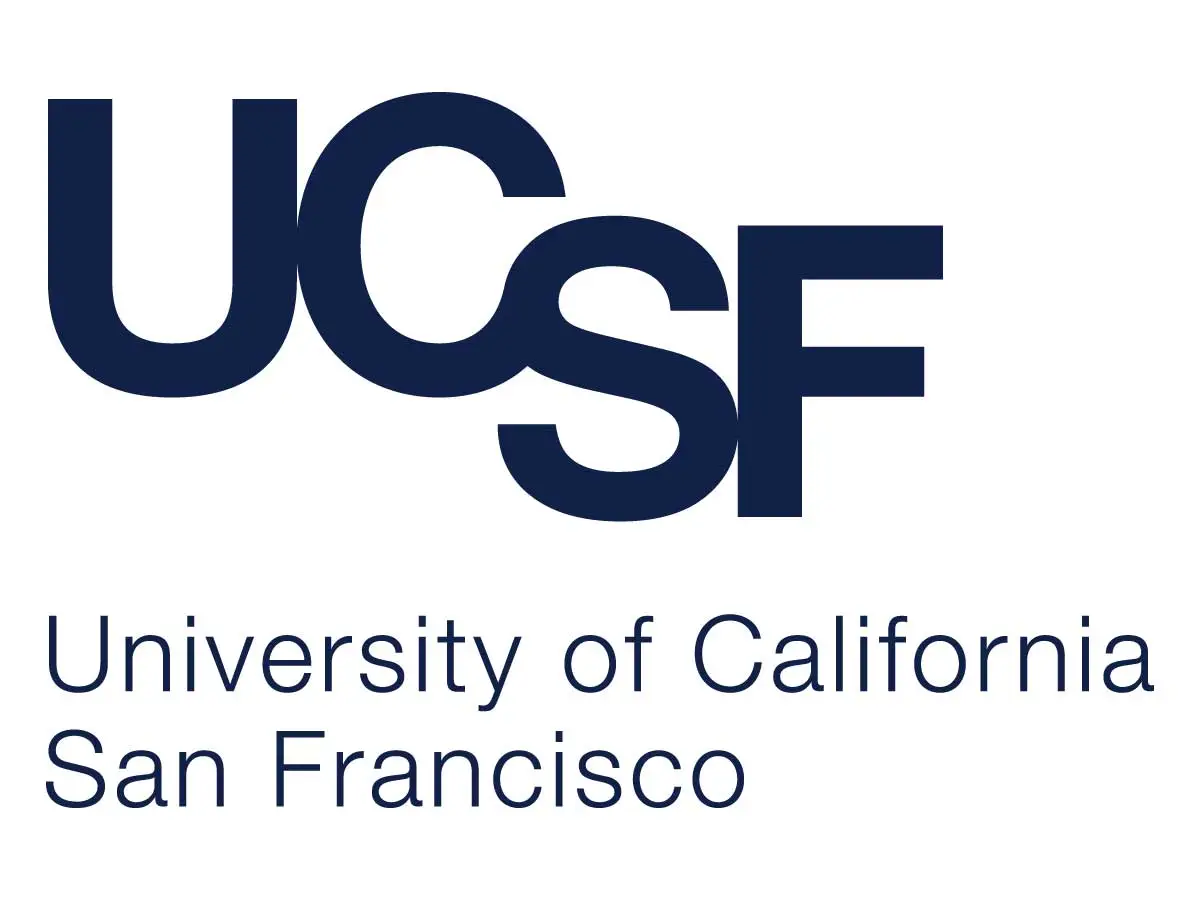
|
Talk in San FranciscoRenée gave a talk in San Francisco, where she was invited and hosted by Dr. Laura van ’t Veer to present our work on WNT signaling and breast cancer in the UCSF Breast Oncology Program seminar series. |
|
10 January, 2024 |

|
Welcome to our new internship studentsIt is the time of year again where we welcome our new MSc internship students. |
|
8 January, 2024 |

|
New publication: A molecular toolbox to study progesterone receptor signalingOur paper "A molecular toolbox to study progesterone receptor signaling" has been published in the Journal of Mammary Gland Biology and Neoplasia. |
|
29 November, 2023 |

|
Now recruiting a new staff scientist with a focus on 3D tissue organoids (UD/assistant professor level)We are excited to announce this rare opportunity, thanks to the recent sectorplangelden: We are looking for a new colleague to join our scientific staff with a focus on 3D tissue organoids (mainly breast and mammary gland, but with some room for intestine).
|
|
21 November, 2023 |
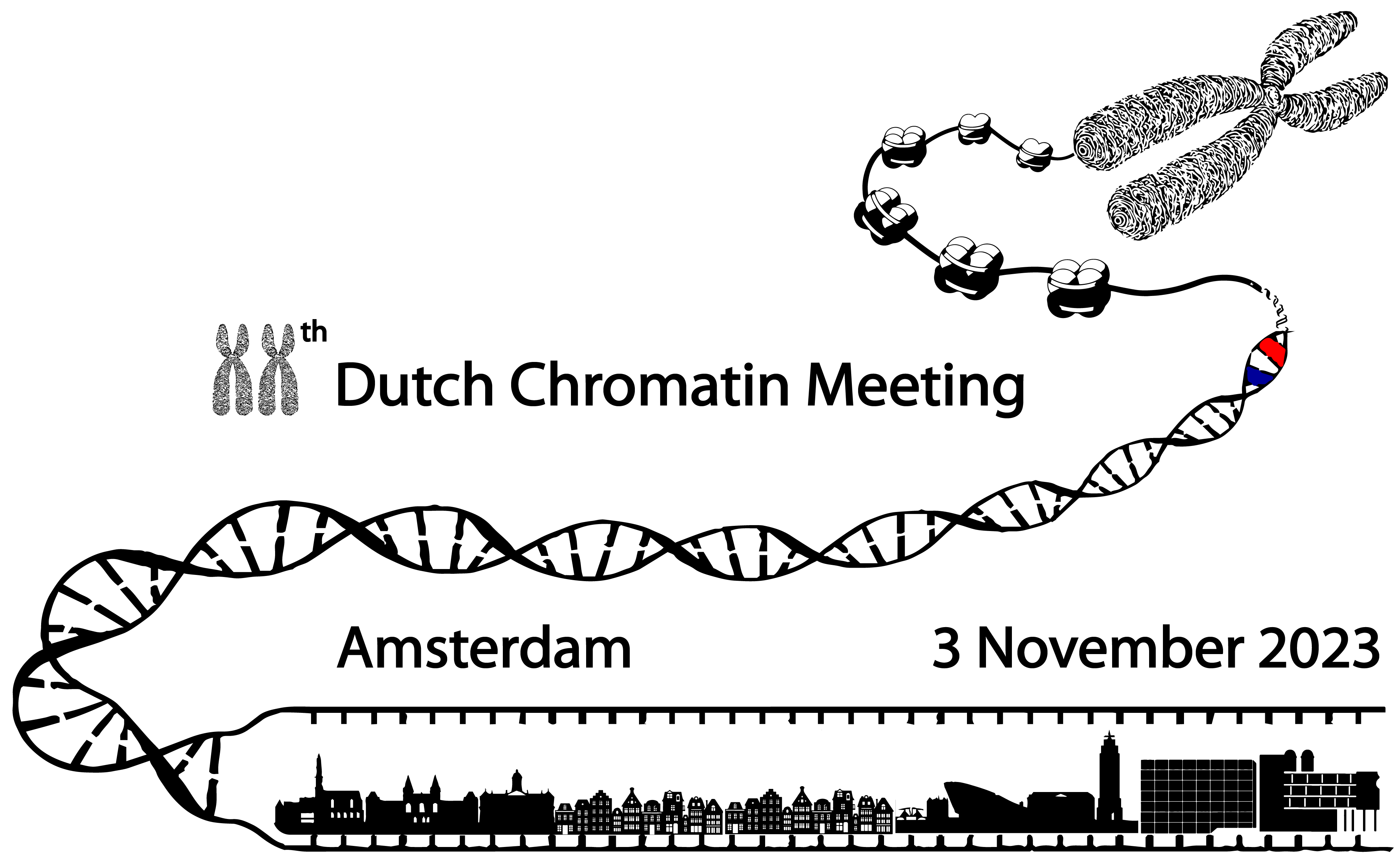
|
20th Dutch Chromatin meetingAt the initiative of Maike Stam, the 20th edition of the Dutch Chromatin meeting returned to Amsterdam. Together with Maike, Renée, Thijs, Frank Jacobs and Rutger Gjaltema turned it into an all SILS organised event. |
|
3 November, 2023 |

|
FNWI PubquizSince our enthusiasm was bigger than the maximum allowed team size at the annual FNWI Pubquiz, we had to divide ourselves into two teams of three. Strategically not the smartest move, and we did not win, but it looks like we had fun! |
|
31 October, 2023 |

|
PhD defense: Yorick becomes dr. Van de GriftOn 18 October 2023, Yorick was the fourth PhD student from the lab to successfully defend a PhD thesis. We gathered in the Agnietenkapel for the occasion and the questions from the committee beautifully covered all of the various aspects of the work described in the thesis. |
|
18 October, 2023 |

|
Keynote talk in GroningenRenée gave a keynote talk at the annual CRCG PhD day of the Cancer Research Center in Groningen. Thanks for the wonderful invitation and the opportunity to talk to early career scientists about the different academic and life choices in our line of work! |
|
12 October, 2023 |

|
Theatercollegetour kick offRenée played/gave (not sure what verb to use with a theatercollege) her first theatercollege during a matinee in Venlo. Thanks to the interactive, friendly and interested audience for the warm welcome! It was a pleasure to be part of a line up with two other theatercolleges on free will (or the lack thereof) and inheritance tax with comedian Fuad Hassen functioning as excellent glue and a light note in between the different performances.
|
|
8 October, 2023 |

|
Weekend van de Wetenschap 2023Thijs and Renée spent all Saturday at Science Park during the annual open day (part of the national "Weekend of Science"), to share the fascinating biology of the mammary gland, or breast. Join us next year if you too are curious about the extra nipples of Harry Styles! |
|
7 October, 2023 |

|
Radio 1Renée was interviewed on Radio 1, as a studio guest in Villa VdB, about the upcoming theatercollegetour of the Universiteit van Nederland. |
|
2 October, 2023 |

|
Joëlle starts as a PhD studentJoëlle started her PhD thesis research. Supervised by Thijs and Renée), Joëlle will join Anna on the NWO-XL project and use gastruloids as a model system for early mammalian development to study if and how developmental signals (mainly WNT and BMP/Nodal) are interpreted differently depending on the cellular chromatin state. She will be co-supervised by Marten Postma, who also recently joined our NWO-XL consortium and with whom we are collaborating on cell based models and quantitative image analysis |
|
1 October, 2023 |

|
Lab tripWe carved out some time for a lab trip in the forest near Maarn. Joëlle joined for the occasion, a couple of days before the official start of her contract. |
|
27 September, 2023 |

|
New PhD thesis from the labYorick dropped off the printed copies of his PhD thesis. Another beautiful piece of work, albeit somewhat on the hefty side. One month to go before the defence!
|
|
22 September, 2023 |

|
2023 WNT meeting in SpainRenée gave a talk and chaired a session at the 2023 GRC on WNT signaling, which was held just outside of Barcelona. It was great to catch up with old friends, be emerged in really cool science for a couple of days - and to see the continued influx of young investigators: a clear signal that the WNT field is very much alive and kicking. |
|
31 July, 2023 |

|
New pre-print! Celebrating the first first author submission of MarleenMore cake? Well yes indeed! |
|
21 July, 2023 |

|
Two highlights in oneWe are really excited to announce that our position paper, which is the outcome of the 2022 ENBDC Think Tank held in Amsterdam was published today. |
|
14 July, 2023 |

|
CakeWe had cake to celebrate that we finally managed to get one of our permits approved.
|
|
6 July, 2023 |

|
lab BBQThijs hosted our lab BBQ this year, where we celebrated the start of summer, the upcoming completion of the BSc and MSc internships and other highlights - including the award of a starters grant to Thijs and the decision that one of the UD positions available from the sectorplangelden was awarded to our group. |
|
27 June, 2023 |

|
NWO Life conferenceAs one of the committee members of the NWO research community "From Genes To Organisms", Renée chaired a session at the 2023 NWO Life conference. |
|
23 May, 2023 |

|
DSCCB Volleyball teamDespite the fact that some of us were clearly still hiding in the office, but we did compete in the FNWI Volleyball Tournament, with Yorick also dropping by as special reinforcement.
|
|
17 May, 2023 |

|
2023 ENBDC Weggis WorkshopMarleen, Tanne and Renée went to Switzerland for the ENBDC Weggis workshop. While the day train made it to Switzerland according to schedule, the NightJet got cancelled just prior to departure, which meant that Renée had to get a last minute airplane ticket after all. Luckily she was on the same flight as Jos Jonkers, which made for good travel company and time to catch up. |
|
30 April, 2023 |

|
First OrganoidNL meetingTogether with colleagues from AMOLF and Utrecht (Hubrecht, UMC and Prinses Máxima), Renée organized the very first OrganoidNL symposium to highlight and celebrate all of the exciting organoid research that is going on in the Netherlands. On the evening prior, Thijs and Renée had the honor and pleasure of taking keynote speaker Jacob Hanna out for dinner. |
|
31 March, 2023 |

|
Our 2023 artist in residence arrivesFrench composer Julia Pajot is our 2023 artist in residence. She has developed her own system to represent various aspects of matter and will apply her system, including spatial orchestration, to our multi scale studies of mammary gland biology - meaning that we should get an orchestral piece of the developmental dynamics of the mammary gland at the molecular, cell and tissue level.
|
|
24 March, 2023 |

|
Rosa performs at the InScience FestivalRenée tagged along with our 2021-2022 artist in residence Rosa Schogt to the InScience Festival in Nijmegen, where Rosa performed some of her science inspired poetry in the Amazing Discoveries tent. |
|
18 March, 2023 |

|
Short lecture on stem cells and cancer for high school students and their parentsThe Science Park Campus open day was held on Friday 17 March. This meant that lots of high school students and their parents visited us to get a feel for our university and to see if our Biomedical Sciences Program aligned with the interests and expectations. |
|
17 March, 2023 |

|
Review article on visualizing WNT signaling is outThe review article by Tanne and Renée on Visualizing WNT signaling in mammalian systems came out today. See our publications page for all relevant links. |
|
16 March, 2023 |

|
PhD defense: Saskia becomes dr. De ManToday Saskia defended her PhD thesis in De Agnietenkapel, which was filled to the brim with family, friends and (former) colleagues. This was also the first time that Renée acted in the formal capacity of promotor and used her ius promovendi to officially award Saskia the title of doctor. |
|
13 March, 2023 |

|
EMBO course Techniques for Mammary Gland ResearchTogether with Maria Vivanco (Spain) and Martin Jechlinger (Germany) Renée organised an EMBO practical course at the EMBL campus in Heidelberg. This was the 4th time this course was organised, but the first time that Renée was involved. |
|
10 March, 2023 |

|
Why outreach should count towards valorisation and impactIn the fall, Renée gave a lecture for high school teachers (organised by BetaPartners). Today we learned that one of the teachers was inspired to use the topic of genome editing and the information provided in the lecture to generate new learning materials and assignments for their high school students! |
|
10 March, 2023 |

|
New PhD thesisThe third PhD thesis of the lab has rolled off the press and it looks beautiful. Saskia will defend this impressive body of work on 13 March.
|
|
16 February, 2023 |

|
Celebrate good timesScience is full of failure (cloning, grant applications, you name it). Therefore, it is even more important to celebrate the highlights! And luckily we had some happy events too: Anna started - as did most of our students - Tanne’s review article got officially accepted, Renée was co-author on a paper about flying squirrels (it is about WNT5A, really) that was accepted in Science Advances (collaboration with Ricardo Mallino at Princeton), so plenty of reason to have cake, stroopwafels and other cookies (responsibly spread out over multiple weeks).
|
|
6 February, 2023 |

|
Welcome students, welcome Anna!Today, Anna started as a technician on the NWO-XL project. We are in the process of recruiting a PhD student, but Anna will help to get things up and running by cloning and generating new reporter alleles and setting up the 3D gastruloid cultures. |
|
1 February, 2023 |

|
Nothing to see here...
|
|
27 January, 2023 |

|
The fifth ENBDC Think TankOriginally scheduled for December 2020, we finally succeeded in gathering (part of) the ENBDC organising committee in Amsterdam for our annual Think Tank. This fifth addition was co-organized by Renée and Jos Jonkers and was made possible by financial and in kind contributions from the University of Amsterdam, the Netherlands Cancer Institute and Stem Cell Technologies. |
|
8 December, 2022 |

|
Talk for high school teachersPreviously postponed (courtesy of the pandemic), Renée gave a talk for the Stichting Betapartners about basic breast cancer research and CRISPR/Cas genome editing. In the audience were biology (and other science) teachers for HAVO and VWO, TOAs and people from the LIO trajectory (leraar in opleiding, teacher in training). |
|
24 November, 2022 |

|
Marleen and Tanne attend the 2022 Wnt meeting in JapanMarleen and Tanne returned from the 2022 Wnt meeting in Japan, where they both presented posters (and gave a flash talk). Luckily, they also had the opportunity for some sightseeing prior to the start of the conference to fully emerge themselves in Japanese culture. |
|
23 November, 2022 |

|
The lab turns 9Today marks the official 9 year anniversary of the Wntlab, counting from when Renée started her tenure track at the University of Amsterdam. On to our second lustrum! |
|
1 November, 2022 |

|
Update from the midst of the busiest teaching season: team work for the winThere is never a good time to get sick, but the busiest teaching season definitely is not the time - and COVID brain fog and fatigue are definitely real! |
|
28 October, 2022 |

|
Dutch chromatin meeting 2022Marleen and Renée attended the 19th Dutch chromatin meeting in Leiden, where Marleen also presented a poster on our successful efforts to dissect the tissue-specific regulation of Wnt4 gene expression in the mammary gland. |
|
27 October, 2022 |

|
NWO wetenschapscommunicatieRenée attended the NWO national science communication day in Den Haag (The Hague). While the plenary sessions (including a presentation by image sleuth and scientific integrity consultant Elisabeth Bik) and the breakout rooms were informative (including a working session on the newly formed/forming national center for science communication spearheaded by Alex Verkade and Ionica Smeets), the event was slightly overshadowed by the fact that Renée probably caught COVID there. We are all about cell to cell communication, but this is not what we had in mind. |
|
10 October, 2022 |

|
Knowledge videos / OnderwijsvernieuwingAfter wrapping up our Frontiers in Medical Biology wetlab practicals with the entire lab, Renée spent the remainder of the afternoon recording two "kennisclips" with Vincent Blum and Edwin van Lacum .
|
|
7 October, 2022 |

|
Weekend van de Wetenschap: De MelkfabriekWhile the lab certainly does not have a shortage of outreach activities, this year we took part in the Science Park Open Day during the Weekend van de Wetenschap (Dutch National Weekend of Science) for the first time. |
|
1 October, 2022 |

|
Coming up: Weekend van de Wetenschap and Poëzie onder de MicroscoopThere are multiple opportunities for the general public to come meet us in October, so come and join us at one of the following events and ask us everything you have always wanted to ask a biologist (we may have partial answers to some of your questions). |
|
21 September, 2022 |

|
Lab trip to Fabrique des LumieresIn the last quiet week of summer, before the students are back on campus and the teaching starts, we went to the Westergasfabriek to visit the Klimt/Hundertwasser exhibit by Fabrique des Lumieres. |
|
1 September, 2022 |

|
Goodbye studentsSpring passed quickly and updating the website did not get priority. |
|
31 August, 2022 |

|
NWO XL grant awardedThis year saw multiple grant applications and just as many rejections. Despite what Renée told everyone, it turned out she was not yet dulled and the blows still hurt. |
|
30 July, 2022 |

|
Summertime journal clubSummer has arrived and the teaching semester is almost over. Time to switch gears and have journal club the way it must have been intended: outside, on a terras, with coffee/tea and apple pie. |
|
6 July, 2022 |

|
Lab BBQWith the first students approaching the end of their internship, Tanne again hosted our annual lab BBQ. Good times were had by all. |
|
7 June, 2022 |

|
Gordon Research Conference on Mammary Gland BiologyRenée travelled to Tuscany, for one of her favorite conferences (and conference locations...), hoping she would not get stuck at Il Ciocco with a positive COVID-19 test (because nobody can afford that). |
|
30 May, 2022 |

|
Conference travel is back - but science has changedSpring saw a huge storm in the Netherlands, war in Europe, and the return of in person scientific meetings. The first conferences still felt a bit awkward... do we mask or not? Everyone probably got used to their personal space having a 1.5 meter radius, so sitting side by side in a conference room did take some getting used to. |
|
30 April, 2022 |

|
Financial support for our artist in residency programWe are excited to announce that the Amsterdams Universiteitsfonds has decided to support our application for continuation of our artist in residency program. This means that, with some additional support from FNWI science communication, we can now offer a stipend to next year’s artist (and to our current artist, Rosa Schogt - thank you for being our adventurous guinea pig!). |
|
11 April, 2022 |

|
Welcome students!All of the new students have started their internships, which we celebrated by going out for lunch in De Polder. Time for a quick (because cold and very windy) group picture - alas not fully complete because, well, corona. Better luck next lunch. |
|
8 February, 2022 |

|
In which we present our artist in residence project to the worldRosa and Renée presented the first results of the artist in residency at SPUI25. There was room for a small live audience, with others watching the livestream at home. |
|
1 February, 2022 |

|
PhD defense: Anoeska becomes dr. Van de MoosdijkToday Anoeska defended her PhD thesis in de Agnieten kapel in Amsterdam - just in time before stricter COVID-19 measures were announced, so there was even the possibility for (sit down) drinks and a proper celebration afterwards.
|
|
16 November, 2021 |

|
Wntlab You Tube channel launchThe lab officially turns 8 years old today. A good reason to launch our YouTube channel with one of the first videos we ever made from data produced in the lab by Anoeska van de Moosdijk: A bifurcating terminal end bud with WNT-responsive stem cells scattered throughout. This experiment ultimately resulted in one grant, three new mouse models and the PhD thesis of Anoeska! |
|
1 November, 2021 |

|
#BreastCancerAwarenessMonth (2)The University of Amsterdam Press Communications Office (UvA Persvoorlichting) highlighted the lab on their Instagram account. This time, there was time and space (albeit in 15 second snippets and soundbites) to stress our fundamental research. |
|
14 October, 2021 |

|
#BreastCancerAwarenessMonth (1)Renée was featured in a newspaper article in "Het Reformatorisch Dagblad" because of Breast Cancer Awareness Week. |
|
11 October, 2021 |

|
Nacht van de poezieOur artist in residence, Rosa Schogt, had the honor of being the opening act of the 38th Dutch Poetry Night. One of the poems she read was "Het verband tussen snelheid en massa" (The link between speed and mass), which she wrote earlier this year inspired by our work. As you can tell from the audience response, this poem needs to sink in. |
|
2 October, 2021 |

|
Goodbye Saskia!We had dinner in De Polder to say goodbye to Saskia, who is moving on to the next step in her career. She will start a new job at Ocello in October. |
|
16 September, 2021 |

|
Review chapter out onlineA new review, in which Saskia and Renée zoom in on the working mechanism of the WNT/CTNNB1 destruction complex, came out online today. It looks like the DOI has not been activated yet, but you can access the review (titled "Zooming in on the WNT/CTNNB1 Destruction Complex: Functional Mechanistic Details with Implications for Therapeutic Targeting") here: |
|
13 September, 2021 |

|
Goodbye students and welcome Anna!Before the start of the academic year 2021-2022, we said goodbye to our students (Omayma and Uliana gave their talk before the summer break and handed in their reports, Melanie and Jenny presented their work today and are wrapping up the writing and Jobana will wrap up this month). |
|
1 September, 2021 |

|
Interview with Saskia about her research visit to NIHWho knew? As it turns out, some Fulbright scholarships are sponsored by Elsevier. For this reason, Saskia was interviewed by Elsevier Connect about her view on scientific research and her visit to the NIH, where she spent some time in the Lebensohn lab for the final stages of her PhD thesis research. |
|
4 August, 2021 |

|
New pre-printJust before the summer break we published a new pre-print. |
|
28 July, 2021 |
|
|
New publication: Paper accepted in eLife and out onlineWe are very excited to announce that after a long and strenuous, but altogether very positive and constructive review process, our study "Quantitative live-cell imaging and computational modelling shed new light on endogenous WNT/CTNNB1 signaling dynamics" by De Man et al. has been accepted for publication by eLife! |
|
9 July, 2021 |

|
The very first Wntlab PhD defense: Nika becomes dr. Heijmans
On Wednesday morning Nika successfully defended her PhD thesis, thereby becoming the first dr. to come out of the lab. Congratulations Nika on such a beautiful thesis and a job well done! |
|
7 July, 2021 |

|
Lab BBQTanne hosted a lab BBQ to celebrate summer and the (upcoming) end of the BSc and MSc internships. This was the first time we were all together, timed with scientific precision in the week in which COVID-19 levels were at their lowest (that was fun while it lasted). |
|
7 July, 2021 |

|
Coffee break and impromptu lab pictureWe had our first coffee break with the entire lab in the new constellation. We can only imagine what exciting development will still occur on this patch of land that makes it look like we live somewhere out in the desert or on a building site (we have high hopes for a Friends style fountain, but it looks like it might just be plain old grass). In either case, the wall did allow us to soak in the sun and pose for a socially distanced lab picture. Let’s hope this is the last 1.5 meters one!
|
|
2 June, 2021 |

|
Marleen joins the lab as a new PhD student
|
|
1 June, 2021 |

|
New publication: Behind the scenes of the human breast cell atlas project
Renee wrote a perspective for a special edition of the Journal of Mammary Gland Biology and Neoplasia that focuses on single-cell techniques. She also served as guest editor for this special issue, together with Zuzana Koledova (Czech republic) and Edith Kordon (Argentina). |
|
29 April, 2021 |

|
Publication from a collaboration
Good things come to those who wait and patience is a virtue. These words definitely apply to this study that was just accepted for publication in Development. |
|
26 April, 2021 |

|
ENBDC Weggis workshop
No fresh mountain air or foggy morning views across the lake, unfortunately, as the ENBDC Methods Workshop was held via zoom this year. On the bright side, this meant we could afford to take all of our MSc students to an international conference! Hopefully the organizers do not mind that our BSc students also dropped by for the Friday morning session on development. |
|
22 April, 2021 |

|
Welcome Demi and Tiba
For the first time in history, we will have two BSc students joining the lab while performing their actual lab work more remotely in one of the teaching buildings. |
|
1 April, 2021 |

|
Saskia visits the NIH
After a long period of insecurity as to whether travel to the United States would actually be possible mid-pandemic, a small miracle happened and Saskia left for a research visit to the NIH, where she will be working in the lab of Andres Lebensohn for the last part of her PhD. |
|
19 March, 2021 |

|
Welcome Uliana
Uliana is the last MSc student to join the lab for this academic year. She will join Jenny, Jobana and Omayma in using multiple online tools to generate new hypotheses for follow up research. |
|
1 March, 2021 |

|
First seminar since the start of the pandemic
Renée gave her first talk since November 2019 (not counting teaching and outreach activities). |
|
19 February, 2021 |

|
Welcome students
We did our best to create as many internship positions as we possible could to minimize the impact of the pandemic on the training of our MSc students. |
|
2 February, 2021 |

|
Thijs joins the lab as a new staff scientist
Thijs van Boxtel started in the lab today. He will split his time as an assistant professor between research and teaching and brings with him many years of experience in developmental biology. |
|
1 February, 2021 |

|
Announcing the start of our artist in residence program
(ENG) |
|
30 January, 2021 |

|
Happy Holidays
|
|
24 December, 2020 |

|
Mini college recordedIn between re-organizing the lab, wrapping up before Christmas and juggling the pandemic, Renée recorded a mini college on stem cells and cancer (in Dutch) in the FNWI recording studio.
|
|
15 December, 2020 |

|
Review article on CTNNB1 publishedOur review on CTNNB1, written by Tanne and Renée, came out today as an Open Access article in Open Biology. |
|
9 December, 2020 |

|
Paper acceptedOur paper "How to use online tools to generate new hypotheses for mammary gland biology research: a case study for Wnt7b", previously available as a pre-print, has found a permanent home in the Journal of Mammary Gland Biology and Neoplasia.
|
|
25 November, 2020 |

|
Review acceptedToday we celebrated that Tanne’s review article on the dual function of CTNNB1 in cell adhesion and WNT signaling was accepted for publication in Open Biology.
|
|
19 November, 2020 |

|
Recruiting a staff scientistWe are recruiting a staff scientist (UD level, assistant professor). This is a non-tenure track position (50/50 teaching/research). |
|
9 November, 2020 |

|
The lab gets an official nameAmidst all of the COVID-19 craziness, 2020 also brought an exciting highlight: |
|
24 October, 2020 |

|
Celebrating things worth celebrating - COVID styleWe had planned to celebrate the start of Ingeborg’s appointment with a lab lunch in the Polder, but the Dutch Coronvirus measures got tightened - so those plans had to be cancelled and we had to improvise. |
|
8 October, 2020 |

|
Tanne and Renée talk about breasts on Radio SwammerdamOctober is breast cancer awareness month - a very good reason for Radio Swammerdam to focus their weekly hour of science radio on the breast. |
|
4 October, 2020 |

|
Ingeborg joins the lab as a new technicianWe welcome Ingeborg Hooijkaas, who joined the lab on 1 October as our new technician. |
|
1 October, 2020 |

|
New pre-print: How to use online tools to generate new hypotheses for mammary gland biology researchWe are excited to announce a new pre-print, "How to use online tools to generate new hypotheses for mammary gland biology research: a case study for Wnt7b", which is now available via Biorxiv. |
|
22 September, 2020 |

|
Hybrid lab meetingAll of our lab meetings are still held via Zoom, but today we succumbed to the temptation and held the lab meeting in a hybrid format (at a safe distance and sticking to the maximum occupancy of the meeting room): Only Saskia was working from home. |
|
2 September, 2020 |

|
Paper published in GenesisThe first mouse model generated in the lab has now been published as an open access paper in Genesis. You can get the PDF here if you want something that looks a bit prettier than the original preprint. |
|
9 July, 2020 |

|
Paper accepted!Our study "A novel Axin2 knock-in mouse model for visualization and lineage tracing of WNT/CTNNB1 responsive cells" by van de Moosdijk & van de Grift et al. was accepted for publication in genesis.
|
|
25 June, 2020 |

|
Fulbright Scholarship and Nijbakker-Morra fellowship awarded to Saskia de ManIn the spring of 2020, Saskia was awarded a Fulbright scholarship as well as a fellowship from the Nijbakker-Morra foundation. These funds will allow a short research visit to the United States. |
|
20 June, 2020 |

|
New pre-print: Quantitative live cell imaging of WNT/CTNNB1 signaling dynamicsWe are really excited to announce that we just posted a new pre-print on Biorxiv |
|
28 May, 2020 |

|
Playing with ScienceARTEZ students Iris Beek and Moritz Brill presented the outcome of their residency at |
|
21 May, 2020 |

|
Comment in BionieuwsRenée was featured in the latest issue of Bionieuws, where she was asked to comment on a recent paper by Caleb Dawson and colleagues from the lab of Jane Visvader. The paper describes the discovery and characterization of a population of macrophages (a specific type of immune cell) in the mammary gland. What is really cool is that you can see this population sandwiched in between the basal and luminal epithelial cells of the mammary epithelium.
|
|
16 May, 2020 |

|
Did you catch the easter egg?The April 30 issue of Cell is out, which means that the perspective that Renée wrote in honor of Roel Nusse winning one of the 2020 International Gairder Awards is now officially published. |
|
1 May, 2020 |

|
Blog post on collaboration between artists and scientistsRenée was featured on the LSE impact blog in a post titled "To drive innovation, scientists should open their doors to more equitable relations with the arts". Written by Paige Jarreau, the piece highlights the unexpected spin offs that can occur from collaborations between artists and scientists. |
|
30 April, 2020 |

|
Lab life in times of the COVID-19 pandemicLike everyone else on the planet, we are dealing with the effects of the COVID-19 pandemic as best as we can. We went into work-from-home mode on 16 March with only a few critical experiments continuing and are staying in touch via Zoom (for group meetings) and Skype (for 1-on-1 meetings). |
|
9 April, 2020 |

|
New pre-printWe are happy to share a pre-print describing the generation and characterization of the first mouse model we built in the lab.
Read it here.
|
|
4 April, 2020 |

|
Essay on the contributions of Roel Nusse to the Wnt signaling fieldToday it was announced that Roel Nusse is one of the winners of the 2020 Gairdner Award. In honor of his contributions to the field of Wnt signaling and its broader implications in cancer and stem cell biology, Renée wrote an invited essay for Cell. |
|
31 March, 2020 |

|
NWO Grant awardedRenée was awarded a Klein1 grant in the NWO open competition. Using a combination of quantitative live cell imaging and fluorescent tagging of endogenous Wnt pathway components, we hope to achieve a better understanding of the central working mechanism of the WNT/CTNNB1 pathway. |
|
26 March, 2020 |

|
Short review on WNT/CTNNB1 signaling in breast cancerWe published a short review article on the role of WNT/CTNNB1 signaling in human breast cancer in Frontiers in Cell and Developmental Biology, as part of the special topic on mammary gland biology (edited by Dr. Zuzana Koledova from Masryk University). |
|
2 February, 2020 |

|
First publication of 2020We published our first paper in 2020! Previously out as a pre-print on BioRxiv we are happy that our study about the interaction between TMEM98 and FRAT2 found a peer-reviewed home in Plos One.
|
|
24 January, 2020 |

|
Lecture about genome editingOn Monday evening 13 January, Renée gave a lecture for members and guests of the "Chemische Kring" (society of chemists) in Rotterdam about the ins and outs of gene editing. The lecture hall at the "Hogeschool Rotterdam" was filled with an exciting mixture of chemists, biologists (including some students who came to attend after working with CRISPR/Cas in the lab themselves) and the occasional philosopher. |
|
13 January, 2020 |

|
NEMO KinderlezingRenee gave the last NEMO Kinderlezing of 2019 . This time the topic was aging. A lot of 8-12 year olds came to the NEMO Studio Theater and together we went searching for an answer to the question: "How old can I get?" |
|
15 December, 2019 |

|
ENBDC Think Tank in ManchesterRenee travelled to Manchester, where she met up with the rest of the ENBDC organizing committee for a peptide hydrogel workshop (thanks to everyone involved!) and a full day talking about research gaps in breast (cancer) biology. |
|
12 December, 2019 |

|
Seminar in AberdeenRenee gave a talk at the University of Aberdeen, the third oldest university in Scotland. She got to talk about science with loads of different and interesting people all day, which is always a bonus. Thank you to Stefan Hoppler for the invitation and for making this such an enjoyable visit, including the sampling of the local pub food and Indian cuisine! |
|
28 November, 2019 |

|
Master class for artists and designersRenee gave a masterclass for artists and designers at Filip Studios in Arnhem on pattern formation in biology and the molecular processes that normally take place unseen inside our cells. |
|
12 November, 2019 |

|
Seminar by Jeroen van ZonJeroen van Zon, group leader on Quantitative Developmental Biology at AMOLF, visited us from just across the street to give a talk about his work on worms and intestinal organoids. A great example of how biology and physics can be combined to yield new insights about how cell division and differentiation are controlled to guide the development and maintenance of complex animal tissues. |
|
8 November, 2019 |

|
Nika presents our work in ChicagoNika presented her work at the Cell Symposium on Transcriptional Regulation in Evolution, Development and Disease in Chicago. She got good feedback on her work on Wnt gene regulation (a joint effort with Katrin and Yorick), which means that now it is on to writing the PhD thesis!
|
|
20 October, 2019 |

|
Keynote lecture at the Finnish Developmental Biology Society and Stem Cell Network meetingRenee gave a keynote lecture at the Finnish Developmental Biology Society and Stem Cell Network during their annual retreat just outside of Helsinki. The awesome opening keynote by Josh Brickman was a tough act to follow... It was great to interact and hang out with so many stem cell and developmental biology aficionados for a couple of days. Very impressed by the cool science that is going on in Finland! |
|
11 October, 2019 |

|
Outreach lectureHigh school teachers and their students visited the University of Amsterdam for lectures and a behind-the-scenes tour of some of our labs and facilities. Renée gave a talk on the basic science behind stem cell biology and regenerative medicine. |
|
2 October, 2019 |

|
Tanne has joined the lab as a new PhD studentOn 1 October Tanne van der Wal started her PhD thesis research in the group. She will be dissecting the molecular mechanisms of WNT/CTNNB1 signaling using CRISPR/Cas9 mediated tagging and functional imaging. |
|
1 October, 2019 |

|
Poster prize for Saskia de Man at the 2019 GRC on Wnt signallingSaskia and Renée attended the 2019 GRC on Wnt signaling in Vermont. |
|
16 August, 2019 |

|
Veni grant for Katrin WieseWe are very excited to announce that Katrin Wiese was awarded a Veni grant from NWO (the Dutch Science Foundation). This competitive personal grant allows Katrin to further develop her ideas on Wnt gene regulation and to zoom in on the molecular processes involved for the coming three years.
|
|
15 July, 2019 |

|
Lab lunchThe Bsc students are wrapping up their internships, so the lab went for lunch at De Polder. Goodbye Beau, Delano and Kyah. Thanks for all your hard work and contributions and good luck in your future endeavors! |
|
10 July, 2019 |
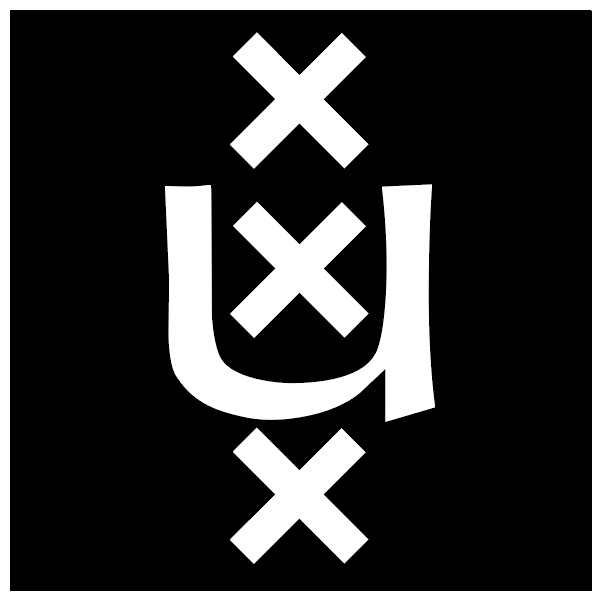
|
Travel grants for Nika Heijmans and Saskia de ManBoth Nika Heijmans and Saskia de Man were awarded travel grants from the Amsterdams Universiteitsfonds and the Genootschap ter Bevordering van Natuur-, Genees- en Heelkunde. |
|
1 July, 2019 |

|
Seminar in LeuvenRenée visited the Stem Cell Institute in Leuven, Belgium. She gave a talk and spent the entire day talking about science with PhD students, postdocs and group leaders. |
|
27 May, 2019 |

|
11th ENBDC workshop on mammary gland biology and breast cancerRenée travelled to Switzerland for the 11th annual meeting of ENBDC members. This also served as an annual reminder for the lab group picture (see icon on the left and the full size image as part of the time capsule on our alumni page).
|
|
17 May, 2019 |

|
5 year Wntlab anniversaryWe celebrated the 5 year anniversary of the Wntlab by hosting our first reunion for alumni. It was really good to see so many of our former BSc and MSc students return to Science Park and to hear about their diverse and exciting career steps.
|
|
10 May, 2019 |

|
The bluesAnoeska brought cake to celebrate the first glimpse of a signal in our new mTurquoise reporter. This is the first mouse strain in the lab generated by CRISPR/Cas9 editing (a collaboration with Ivo Huijbers and Lona Kroese at the Netherlands Cancer Institute). |
|
15 April, 2019 |

|
NEMO kinderlezing
|
|
12 March, 2019 |

|
Awesome Wnt cakeThe students celebrated the start of their internships by treating us to an exciting cake:
|
|
20 February, 2019 |

|
Grand tour of GermanyRenee visited Jena (8 hours by train from Amsterdam) for a PhD committee meeting and gave a talk at the Leibniz center for Aging. Then she took a train to Munich, where she spent the weekend working in a hotel room. On Sunday she met up with Larissa to visit collaborator Christina Scheel for some inside tips on human breast organoid cultures. Six days well spent! |
|
14 February, 2019 |

|
Welcome studentsBeau, Delano and Kyah started their BSc internships. With their arrival, the lab is crowded and all supervisors are busy again. Here is to happy cloning and good results! |
|
1 February, 2019 |

|
Feature in KWF magazineRenée was featured in "Sterker", the magazine for KWF donors. She was invited to talk about the link between science and art. |
|
15 January, 2019 |

|
Volkskrant article on cardiac stem cellsRenée contributed to an article in the Volkskrant by journalist Nienke Zoetbrood. |
|
12 January, 2019 |

|
Evo-Devo talk for high school teachersOn Saturday morning Renée gave a talk at the 2019 NIBI conference for high school teachers, which was held in Lunteren. This year’s theme was "Evolutie in Actie" ("evolution in action") and the program offered a dazzling number of (interactive) lectures and workshops covering all aspects of evolution.
|
|
12 January, 2019 |

|
First preprint for the labWe published our first pre-print on Biorxiv: |
|
4 January, 2019 |

|
Welcome RianneRianne started her first MSc internship in December. She joined the other Molecular Cytology internship students for a cloning class under the supervision of Anna, and imaged her first fluorescent fusion protein constructs before Christmas! |
|
1 January, 2019 |

|
Next step for AnoeskaToday was officially the last day that Anoeska was employed as a PhD student. We were already slowly getting used to this, as she had been working in the lab part time since taking on a new job as management assistant in our institute. |
|
21 December, 2018 |

|
ENBDC Think Tank in BilbaoRenée visited Bilbao for the second time in two weeks (what are the chances...) for a Think Tank meeting of the ENBDC organizing committee. Maria del Mar Vivanco took excellent care of the organization, which not only included the scientific program but also some really good pintxos. |
|
13 December, 2018 |

|
Thesis defense in BilbaoRenee chaired the PhD thesis defense committee of Virginia Murillo, who did her PhD research with Dr. Robert Kypta at CIC bioGUNE in Bilbao. The defense took place at the University of the Basque country and ensured interesting scientific discussions about WNT11 and FZD8 and their role in prostate cancer. |
|
30 November, 2018 |

|
The lab turns 5It is a little hard to believe that we can already celebrate our five year anniversary: Apparently time indeed flies when you are having fun (or when you do not stop to smell the roses). |
|
1 November, 2018 |

|
Wrapping up the Grassroots projectThe computer game that was developed as part of the Grassroots project (awarded to Renee and Gooitzen Zwanenburg in the fall of 2017) was put to the test by the third year BSc students in the Frontiers in Medical Biology course.
|
|
16 October, 2018 |

|
Wnt meeting 2018 in HeidelbergThe entire lab travelled to Heidelberg, a beautiful old town in the south of Germany (its university was founded in 1386) for the European Wnt meeting 2018. It was organized by Michael Boutros, Thomas Holstein and Christof Niehrs on behalf of the Collaborative Research Center SFB1324 (which concentrates research on the mechanisms and functions of Wnt signaling). |
|
17 September, 2018 |

|
Visit to BaselRenee visited Basel for a PhD committee meeting and a seminar. In addition to presenting some of our newest data that were really hot off the press, she also got the chance to talk to PhD students and postdocs in the lab of Momo Bentires-Alj. A busy program, but a day that was very well spent! |
|
5 July, 2018 |

|
On display in de VolkskrantPhotographer Jos Jansen got much deserved attention in today’s Volkskrant (a national Dutch newspaper), which prominently featured his work, vision and ideas (you will find a link to the piece here). |
|
4 July, 2018 |

|
Artist collaborationEarlier this year, photographer Jos Jansen visited the lab in search of a piece of science that could be featured in his new art project. The result, a wonderful book called "Universe", is now available.
|
|
3 July, 2018 |

|
Developmental advocacyTogether with Roel Nusse, Katrin and Renee wrote a perspective on the role that curiosity driven, basic developmental biology research has played in unravelling the role of Wnt signaling. It came out in Development today as the first piece in a series that will be advocating developmental biology. |
|
26 June, 2018 |
|
|
AAAAAA |
|
24 June, 2018 |
|
|
AAAAAA |
|
24 June, 2018 |
|
|
AAAAAA |
|
24 June, 2018 |
|
|
AAAAAA |
|
24 June, 2018 |
|
|
AAAAAA |
|
24 June, 2018 |
|
|
AAAAAA |
|
24 June, 2018 |
|
|
AAAAAA |
|
24 June, 2018 |
|
|
AAAAAA |
|
24 June, 2018 |
|
|
AAAAAA |
|
24 June, 2018 |
|
|
AAAAAA |
|
24 June, 2018 |
|
|
AAAAAA |
|
24 June, 2018 |
|
|
AAAAAA |
|
24 June, 2018 |
|
|
AAAAAA |
|
24 June, 2018 |
|
|
AAAAAA |
|
24 June, 2018 |
|
|
AAAAAA |
|
24 June, 2018 |
|
|
AAAAAA |
|
24 June, 2018 |
|
|
AAAAAA |
|
24 June, 2018 |

|
2018 GRC on Mammary Gland Biology (2)And here, as final proof that it all really happened and went well, is the GRC 2018 group photo with everybody who was awake and on time to make it to the 8:30 am photo opportunity.
|
|
9 June, 2018 |

|
2018 GRC on Mammary Gland BiologyTogether with Christina Scheel (Munich, Germany), Renee organised and chaired the 2018 Gordon Research Conference on Mammary Gland Biology. A total of 155 scientists, including Katrin (who presented a poster on her work) gathered in beautiful Il Ciocco (Tuscany, Italy) to immerse themselves in all aspects of mammary gland development and function, ranging from branching morphogenesis to breast cancer heterogeneity and from in silico models to clinical trials with the latest targeted therapies. |
|
2 June, 2018 |

|
Keeping up with the PlanariansYou never would have guessed, but it turns out to be easier to regenerate a Planarian worm after cutting it into 8 pieces (yes, each of these pieces will grow a new head/tail/bodyplan) than it is to feed them (below, left).
|
|
15 May, 2018 |

|
Wntlab 2017 - 2018We waited for a sunny spring day to snap a picture of the Wntlab.
|
|
25 April, 2018 |

|
PlanariansWe got some new critters in the lab as Renee is setting up a new Advanced Genomics practical together with Rob Dekker and Martijs Jonker. A jar of Planarians arrived on the 19th of April, which means it is time for some experimentation. The first challenge will be to determine which water they like, then to try and feed them some hard boiled egg yolk and, of course, to see whether they can regenerate in our hands. |
|
20 April, 2018 |

|
Congratulations AnoeskaWe can’t believe it has been four years already, but Anoeska has started writing up the results of her PhD thesis research. She will still be working in the lab part time, but will also slowly transfer into her new job as assistant manager at SILS. |
|
1 April, 2018 |

|
10th ENBDC workshop in WeggisRenee attended the annual methods workshop of the European Network for Breast Development and Cancer labs. Eva Gonzalez Suarez (IDIBELL, Spain) organised and chaired a superb 10-year anniversary meeting, which included oral and poster presentations by junior and established scientists. Renee found the talk by Charles Streuli on the interaction between the circadian clock and different cell types in the mammary gland particularly intriguing. |
|
16 March, 2018 |

|
Welcome Marius and RoanMarius and Roan have started their 5-month BSc internships under the direct supervision of Katrin and Yorick. With their arrival we are now at full capacity. The lab is bursting at the seams - so here’s to good times, lots of exciting data and a healthy dose of troubleshooting! |
|
5 February, 2018 |

|
Welcome LarissaOn the 16th of January Larissa officially joined the lab as a new postdoc. She will be working on the recently awarded KWF project to resolve the role of Wnt signaling in breast cancer. |
|
17 January, 2018 |

|
Welcome Isabel, Katja and SanneThree new MSc students have started their internships in the lab. Isabel joined Amber on the organoid project, Katja will be working with Nika on the VIDI project and Sanne will work together with Saskia on the functional imaging of Wnt signaling. Welcome to all! |
|
15 January, 2018 |

|
Happy HolidaysFrom our lab to yours, a very merry Christmas and all the best for 2018. |
|
24 December, 2017 |

|
GRC 2018 organisation updateA quick update with respect to the upcoming GRC for mammary gland biology, which Renee is organising together with Christina Scheel (Germany): |
|
19 December, 2017 |

|
Permanent position for AmberMost of the lab made it to dinner in De Polder to celebrate that Amber got a permanent position. This mean she can stay on as a technician in the group indefinitely: a very good reason to be happy and excited! |
|
15 December, 2017 |

|
National FinalistNicolaas, who did his BSc internship in our group under the supervision of Nika, was a national finalist in the annual competition for best biology thesis. This competition is organised once a year by the LOBS (Landelijk Overleg Biology Studenten), the organisation of Dutch biology students. |
|
9 December, 2017 |

|
Symposium at the Georg Speyer Haus in FrankfurtRenée gave a talk at the two-day symposium "Dynamics of adult stem cells and cancer" in Frankfurt, Germany. The event was organised by Henner Farin, a junior group leader at the Georg Speyer Haus (an institute for tumor biology and experimental therapy with an entire room dedicated to its first director Paul Ehrlich, one of the founders of modern chemotherapy) and featured talks on a wide variety of topics and cancers, ranging from the hematopoietic system to the liver and from novel bioinformatics approaches to the latest in organoid culture technology and targeted therapy to explore cancer vulnerabilities. |
|
26 October, 2017 |

|
Grassroots project awardedEarlier this week, Renee and Nika introduced our personally designed stem cell board game to 3rd year BSc students in the Frontiers in Medical Biology course. Today, we heard that we can develop this game further thanks to the award of a Grassroots proposal from the University of Amsterdam that Renee wrote together with SILS colleague Gooitzen Zwanenburg. |
|
6 October, 2017 |

|
Welcome JasmijnToday Jasmijn started her BSc internship in the group. Under the supervision of Saskia, she will work on functional imaging of Wnt signal transduction. |
|
4 September, 2017 |

|
What’s Next?The University of Amsterdam turns 385 years old this year. It is still very much alive and kicking however, which is why yesterday we asked: "What’s Next"? |
|
3 September, 2017 |

|
Meeting report ENBDC onlineThe meeting report of the 9th ENBDC Weggis workshop on mammary gland biology and breast cancer has been published in Breast Cancer Research. It is co-authored by Katrin, who chaired this year’s PhD and postdoc session together with Romain Amante from the Bentires-Alj lab in Basel. |
|
28 August, 2017 |

|
KWF grant awardedWe are excited that Renée was awarded a grant from the Dutch Cancer Society (KWF Kankerbestrijding). This allows us to continue our studies on the role of aberrant Wnt signaling in breast cancer. For this project, we will collaborate with the groups of Hans Clevers (Utrecht), Jos Jonkers (Amsterdam) and Christina Scheel (Germany). |
|
16 August, 2017 |

|
Goodbye studentsThis week both Britt and Nicolaas gave a talk presenting the work they performed during their internships. With Catia, Lieve and Tanne also gearing up to finish their last experiments this meant it was time for another lab dinner to say goodbye to another great batch of students. Katrin hosted a gluten-free pizza party for the occasion, which culminated in gluten-free Oreo cheesecake and a game of cards-against-humanity. 
* Yes, this is Z-DNA. Everybody knows we need more left-handedness in this world. Besides, it is only a matter of time before we unravel the functional importance of one of nature’s greatest mysteries. We are glad the students distilled this as the take-home message from their time in our lab. |
|
7 July, 2017 |

|
Group picture 2016-2017
|
|
7 July, 2017 |

|
NWO talent schemeRenée travelled to The Hague, where she sat on a VIDI/VICI laureate-and-committee-member panel with prof.dr.ir. Wim van der Putten to talk about her experiences in applying for (and ultimately obtaining) the much coveted VIDI grant. The goal was to answers questions from researchers planning to submit a proposal for the upcoming round of the NWO Vernieuwingsimpuls. |
|
6 July, 2017 |

|
Viva la vivaRenée travelled to Cambridge, where she was the external examiner for a PhD viva and got the opportunity to meet old and new colleagues. It is really interesting to come across all the different ways in which PhD defences are organised in different countries (which means that it is also always smart to ask for explicit advise from a local as to what is expected of an opponent in that particular academic culture...) |
|
27 June, 2017 |

|
poster prize for AmberAmber won (shared) first place in the poster prize competition at the annual SILS research day. She presented her work on the role of Wnt signaling in the mammary epithelium using primary mammary organoids as a model system. Congratulations! |
|
22 June, 2017 |

|
GRC on mammary gland biology and breast cancerRenée attended (and chaired a session at) the 2017 GRC conference on mammary gland biology. Approximately 200 scientists gathered in the Stoweflake Conference Center in Vermont (for the aficionados: that is close to the Ben and Jerry’s Ice Cream Factory). It was great to catch up with old colleagues and to meet so many new ones. |
|
20 June, 2017 |

|
March for Science: The Event(ENG) |
|
22 April, 2017 |

|
March for science (update)With only a week to go, the March For Science is rapidly approaching. Together with Katrin and Nika, Renée will be among the scientists that will answer questions from the general public in one of two ’teach-in’ tents (appropriately named ’Discovery’ and ’Exploration’ for the occasion). |
|
15 April, 2017 |

|
New lab practical in the makingThis may look like just a bunch of M&Ms to you, but in the lab this turns out to be the beginning of a new practical exercise that Renée hopes to incorporate into the upcoming edition of Frontiers in Medical Biology (a course for 3rd year BSc students). |
|
13 April, 2017 |

|
March for scienceToday Renée attended a brainstorm session at the Nemo Science Centre on how to mobilize people to the March For Science on 22 April 2017. It was enlightening and empowering to be in a room with so many people from different walks of life (not all were scientists, but all value science and empirical evidence).
|
|
2 April, 2017 |

|
EMBO practical courseLast week Nika attended the EMBO practical course "Techniques for mammary gland research". It was a great opportunity to meet other early career researchers studying various aspects of mammary gland biology and to learn the ins and outs of a variety of techniques from expert instructors. |
|
28 March, 2017 |

|
9th ENBDC WorkshopThe annual ENBDC workshop on methods in mammary gland biology and breast cancer was held in Weggis from 9-11 March. Amber, Katrin, Saskia and Renée travelled to Switzerland to attend and present posters. Katrin also organised the postdoc and PhD session, focussing on proteomics, together with Romain Amante from the Bentires-Alj lab. |
|
14 March, 2017 |

|
Visit to JenaRenée visited Jena, where she gave a talk and met with colleagues at the Leibniz Institute on Aging. It was an interesting and fun visit and it felt great to be surrounded by present day scientists in the town of Ernst Haeckel, who always pops up in her developmental biology lectures (and who drew some impressive bioart - as per this link, by the way). |
|
15 February, 2017 |
|
|
New group pictureNow that all of the students for 2016-2017 have started, it is time for a new group picture. The lighting in the lecture hall was horrible, but everybody was present and therefore in the picture. A better shot will follow once spring has arrived. |
|
9 February, 2017 |

|
TenureAfter a positive mid-term evaluation, Renée was promoted to associate professor with tenure. Thanks to everybody in the team for making these past few years such a pleasure and succes! |
|
1 February, 2017 |

|
Welcome YorickYorick has joined the lab as a new PhD student. He will work on identifying the mammary stem cell niche. We are happy to add a Y to our mix! |
|
1 February, 2017 |

|
Happy holidaysOn Saturday we visited the Amsterdam Light Festival. This year’s theme? Biomimicry. From nerve cells to birds’ nests and from arachnids to rotifers - the biology inspired exhibits lit up the area around Waterlooplein.
|
|
17 December, 2016 |

|
ENBDC news updateRenée travelled to Paris for an ENBDC committee meeting, hosted at the Curie Institute by Marina Glukhova. Here are some updates of the exciting year ahead for those interested in mammary gland biology and breast cancer: |
|
16 December, 2016 |

|
Guest lecture at the Spinoza LyceumToday Anoeska gave a guest lecture at the Spinoza Lyceum in Amsterdam. She talked about CRISPR/Cas9 mediated genome editing and was excited to find so many interested high school students eager to engage in a discussion about the promises and pitfalls of this exciting technology! |
|
13 December, 2016 |

|
Opening of the 2016 BAD award exhibitOn Friday 2 December the public was finally able to see the results of the 2016 BAD award competition. Lilian van Daal and Roos Meerman won the race against the clock. Assisted by Joppe Spaans they managed to get all their kinetic 3D printed objects moving just in time before the official opening, which took place at the MU gallery in Eindhoven.
|
|
2 December, 2016 |

|
New studentsLieve was the first student to join our lab in the 2016-2017 academic year. She will work on the mammary organoid system under the supervision of Amber. Welcome! |
|
1 December, 2016 |

|
The 2016 Weggis ENBDC meeting reportThe meeting report of the 2016 ENBDC meeting in Weggis was published in Breast Cancer Research. You can read it here. Anoeska and Renée authored the piece together with Bethan Lloyd-Lewis, Mohammed Bentires-Alj and Robert Clarke. We’re happy it’s out, because the 2017 meeting is already just around the corner! |
|
29 November, 2016 |

|
Congrats to our fellow MC’ersCongratulations to our fellow MC’ers (in particular Daphne, Lindsay and Laura with whom we share the wet lab, and of course our very own Katrin, who is a co-author on the paper) with the publication of their mScarlet story. Read the UvA press release about this bright red fluorescent protein here. Do you have an above average interest in fluorescent proteins? Of course you can also read the full story, which was published in Nature Methods, here. |
|
23 November, 2016 |

|
BAD award 2016 updateDesigners Roos Meerman and Lilian van Daal are working very hard to finish their project "Dynamorphosis" in time for the opening exhibit at the MU gallery in Eindhoven on 2 December 2016. So keep your eyes on the BAD award website for updates and behind the scenes information.
|
|
18 November, 2016 |

|
New issue of Amsterdam ScienceThe latest issue of Amsterdam Science is out. Pick it up if you are near, or download the PDF version of the magazine here. Issue 4 also contains a piece on the recently published Petrinet paper (a collaboration with colleagues from the VU) by Nika and Annika Jacobsen. |
|
3 November, 2016 |

|
Docent UitgelichtRenée was interviewed for the faculty’s online series "Docent Uitgelicht". |
|
1 November, 2016 |

|
New protocol chapter is outOfficially, the publication date is still in the future, but our protocol chapter on lineage tracing of mammary gland and progenitor cells is out. Anoeska and Renée wrote the chapter in collaboration with the group of Jane Visvader (Australia). As a result, the chapter covers both tamoxifen-inducible CreERT2/loxP as well as doxycycline-inducible rtTA/tetO-Cre/loxP tracing systems. |
|
1 November, 2016 |

|
New publication in Scientific ReportsOur paper on the identification and validation of novel reference genes for qRT-PCR studies of the mouse mammary gland is out! In this (open access) paper published in Scientific Reports, Anoeska and Renée used published microarray datasets to find genes that are stably expressed in different stages of mammary gland development. Our hypothesis was that some of these genes could function as reliable, tissue-specific reference genes for qRT-PCR studies and we validated this experimentally. |
|
18 October, 2016 |

|
Up on the roofOn Friday evening we visited our colleagues of the astronomy department at the Anton Pannekoek Institute for a tour of the observatories. These structures are two characteristic features on the roof of the Science Faculty and serve as handy pointers to direct visitors to the right building. |
|
7 October, 2016 |

|
Champagne!Champagne to celebrate the acceptance of our paper. May this be the first of many corks to pop! |
|
4 October, 2016 |

|
Paper accepted in Scientific ReportsOur paper "Identification of reliable reference genes for qRT-PCR studies of the developing mouse mammary gland" by Anoeska and Renée was accepted for publication in Scientific Reports! |
|
3 October, 2016 |

|
Omroep Max Wekker WakkerThis morning, Renée was interviewed by "Wekker Wakker", the wake-up show of Omroep Max on Radio 5. |
|
30 September, 2016 |

|
Opening ceremony of the new O|2 lab buildingToday the new O|2 building at the ‘Zuidas’, which will be our home in the near future once our labs are finished, was officially opened. As part of the festivities, Renee gave a TedxO|2 talk, where she shared 5 interesting facts about the mammary gland. Because concurrent asynchronous lactation is a remarkable feat of nature! |
|
29 September, 2016 |

|
Labouting 2016We had our annual lab day out in our very own Vondelpark, for an afternoon of competitive games. A perfect backdrop for a new lab picture with Team Wnt. |
|
28 September, 2016 |

|
LabLinksRenée gave a talk at the Cell Press LabLink day about our work using primary mammary organoids. The LabLink day was held at the Trippenhuis in Amsterdam. Researchers from throughout the Netherlands (as well as guest speakers from abroad) gathered to talk about "The organoid revolution: Organs in a dish". |
|
27 September, 2016 |

|
Perspective in Developmental CellTogether with Kyle Loh and Roel Nusse from Stanford University, Renée wrote a perspective on the role of the Wnt pathway in the evolution of multicellular animals. It is out now in Developmental Cell and you can access it here. |
|
26 September, 2016 |

|
Wnt meeting 2016Anoeska and Renée attended the Wnt meeting, which was held in Brno, hometown of Mendel, in the Czech Republic. The Mendelian ratio of this meeting was quite low: the program was super full and we only had the opportunity to swiftly pass by the walls of the convent behind which Mendel counted his peas. |
|
20 September, 2016 |

|
Developmental Biology by Gilbert and BarresiRenée was excited to find out that two of her review papers are cited in the brand new, 11th edition of Developmental Biology - the textbook that she is also using in her Frontiers in Medical Biology class. While the 10th edition (from 2014) did not feel outdated, the 11th edition (from 2016) really covers the state of the art in experimental biology, including more extensive coverage of Cre/lox and CRISPR/Cas9 technology. And since most of the students accidentally purchased the latest edition, it is probably time to switch over. |
|
20 September, 2016 |

|
Welcome SaskiaSaskia has joined the lab as a new PhD student. She will study the Wnt pathway using functional imaging. |
|
15 September, 2016 |

|
Special Issue on Wnt signaling and CancerWe are happy to announce that the Special Issue for Cancers on Wnt signaling and cancer, which Renée edited together with Walter Birchmeier, is now available online. Bar a few submissions that are in the final stages of editing and processing, the issue is now complete. Thanks to all of those who contributed! |
|
29 August, 2016 |

|
Publication in Cell ReportsAmber and Renée are co-authors on a paper that is now available online at Cell Reports. The study, entitled "PTEN Loss in E-Cadherin-Deficient Mouse Mammary Epithelial Cells Rescues Apoptosis and Results in Development of Classical Invasive Lobular Carcinoma" describes how the combined loss of E-cadherin and PTEN in mouse mammary epithelial cells induces mouse mammary tumors that closely resemble classical invasive lobular carcinoma. |
|
29 August, 2016 |

|
A present from our studentsOur students left us a lovely gift that we have already put to good use: real wine glasses (in lieu of paper cups), engraved with some of our own quotes (totally taken out of context, of course). |
|
29 August, 2016 |

|
Gordon Research ConferenceRenée attended the Gordon Research Conference on Mammary Gland Biology in Italy, where she gave a talk about ongoing (and mainly unpublished) work of the lab. It was a wonderful meeting, with a full and interesting program (so it did not really matter that the weather in Tuscany was a bit confused and offered mostly rain). |
|
3 June, 2016 |

|
New @wntlab pictureRenée is giving a talk at the 2016 Gordon Research Conference on Mammary Gland Biology. Time for a new @wntlab picture with all of the current students! |
|
31 May, 2016 |

|
Looking for a postdoctoral fellowWe are looking for a postdoctoral fellow with either a background in bioinformatics or the right wet lab skills. Two years of funding is available. Check out the vacancy here. The official application process has opened via the University of Amsterdam website. |
|
30 May, 2016 |

|
Petri net paper publishedOur collaboration with Annika Jacobsen and other colleagues at the VU has resulted in a paper describing the first Petri net to model Wnt signaling. Previously available as a pre-print on bioRxiv, the study has now been published in Plos One. |
|
25 May, 2016 |

|
Winner BAD award 2016Katrin and Renée travelled to The Hague for the BAD award competition. Together with artists/designers Lilian and Roos they were interviewed by a stern-looking jury. Lilian and Roos did a great job pitching their proposal "Dynamorphosis - The beauty of inner mechanisms" and together we managed to defend the proposal quite well. |
|
20 May, 2016 |

|
8th annual ENBDC workshopRenée was the organizer and chair of the 8th annual ENBDC methods workshop on mammary gland development and breast cancer, which took place in Weggis from 12-14 May. Anoeska chaired the PhD and postdoc session (together with Bethan Lloyd-Lewis from Cambridge) and Amber, Anoeska, Katrin and Nika did a great job presenting their posters. Thanks also to the travel fellowship from the GNGH ("Genootschap ter bevordering van Natuur-, Genees- en Heelkunde") that was awarded to Anoeska earlier this year.
|
|
16 May, 2016 |

|
Fame Lab updateEarlier this year, Renée chaired the jury of the local Amsterdam heat of the Fame Lab competition. Last week, Ben Vercnocke, one of "our" two national finalists, managed to win the Dutch Fame Lab competition. He will now move on to the international finals. |
|
27 April, 2016 |

|
Column in Amsterdam ScienceRead Renée’s column "Flexibility" on the "flexwet" in the third issue of the Amsterdam Science magazine. |
|
22 April, 2016 |

|
Katrin Wiese, PhDKatrin successfully defended her PhD thesis in Germany. The rest of the lab could not make it to Würzburg, but we were with her in spirit. We cannot wait to welcome her back as a ‘real’ postdoc (those are Katrin’s words, not ours)! |
|
19 April, 2016 |

|
Pre-print publication on bioRxivWe are happy to announce that our very first pre-print publication is now up on bioRxiv . This study, which is a collaboration with colleagues at the VU, describes the construction and experimental validation of a Petrinet model for Wnt signaling. |
|
24 March, 2016 |

|
BAD award 2016: We have a match!Two weeks ago, Katrin and Renée went to The Hague for the BAD award match-making event. We met a lot of artists who inspired and dazzled us with their unique questions and creative approaches, but we were especially happy to be matched with Lilian van Daal and Roos Meerman. |
|
24 March, 2016 |

|
Regional heat of the Famelab competitionRenée chaired the jury of the regional heat of the Famelab competition. Together with science communication expert Marieke Hohnen and last year’s finalist Encarna Mico Amigo, she had the difficult task of deciding which two contestants would move on to the national finals. All of this took place during an entertaining, informative and fun afternoon at Spui 25. |
|
26 February, 2016 |

|
Piece in de Volkskrant about CRISPR/Cas9Earlier this year we were approached by Volkskrant reporter Maarten Keulemans, who was exploring the widespread use of CRISPR/Cas9 genome editing technology throughout the Netherlands. The piece, featuring Anoeska and Renée, is published in today’s Saturday newspaper. Read it here via Blendle. |
|
13 February, 2016 |

|
Welcome students lab dinnerLast week Tanne started her BSc internship in the group. With Francesca, Jelte and Lotte well on their way, it was time for an official "welcome students" lab getogether. |
|
10 February, 2016 |

|
BAD award special in EindhovenRenée was invited by Isaac Monté to join in a science panel at the MU art gallery in Eindhoven as part of a two-day BAD award special event. Isaac also launched the book detailing the making of his awesome exhibit "The Art of Deception". |
|
23 January, 2016 |

|
Marie Curie Fellowship awarded to KatrinWe were super excited to hear that Katrin’s proposal for a Marie Curie Individual Fellowship has been awarded funding by the EU. This means there are many more exciting Wnt discoveries to come! To celebrate, we all had lunch at De Polder. |
|
22 January, 2016 |

|
Registration for the 2016 ENBDC Methods workshop is openThe program for the upcoming ENBDC workshop in Weggis, focusing on methods in mammary gland biology and breast cancer, has been finalized. Registration and abstract submission are now also open. |
|
5 January, 2016 |

|
New studentA fourth student has joined the lab for an internship. Jelte is in the UVA Biomedical Sciences program (Oncology track) and will be working in the lab for his first MSc internship under the supervision of Katrin. |
|
4 January, 2016 |

|
KWF grant proposal fundedJust before Christmas we heard that our grant proposal, submitted for the "Unieke Kansen 2015" call of the Dutch Cancer Society, got funded by Alpe d’Huzes/KWF kankerbestrijding. |
|
23 December, 2015 |

|
Program of the 2016 workshop on mammary gland biologyWe are happy to announce the preliminary program of the upcoming ENBDC meeting, which will be held in Weggis from 12-14 May 2016. Although we are still in the process of confirming the final speakers, a draft of the meeting program can already be found here on the ENBDC website. |
|
18 December, 2015 |

|
New hybridisation ovenThanks to a small-equipment grant awarded by the Nijbakker-Morra stichting we were able to buy a hybridisation oven for our RNA in situ studies. Nika has already been putting it to the test and has collected some beautiful (and interesting!) results. |
|
18 December, 2015 |

|
Beta Break QuizRenée asked questions about human genome editing (CRISPR/Cas9), three parent babies (UK approved!) and regenerating reindeer antlers (yes, they have Wnts too) during the annual Beta Break Quiz, which also featured questions from the other FNWI disciplines, including physics and chemistry. |
|
9 December, 2015 |

|
New studentsThree new students have joined the lab. Tanne started volunteering in preparation for her BSc internship, which officially starts in February. Francesca and Lotte are both in the Cell Biology and Advanced Microscopy track of the UvA Biomedical Sciences program. They have joined the lab for their first MSc internship. |
|
1 December, 2015 |

|
Bio Art and Design Award exhibition in EindhovenOn Friday evening we went to Eindhoven to witness the official opening of the "body of matter" exhibition in the MU art galleries. Too bad it was already dark outside, because the area surrounding the old Philips Natuurkundig Laboratorium looks like an inspiring urban development area.
|
|
28 November, 2015 |

|
Presentatie WetenschapsagendaGood to see that some of the basic questions we concern ourselves with on a daily basis made it to the Nationale Wetenschapsagenda. |
|
27 November, 2015 |

|
Enlighten the dark: Museumn8 @NEMO Science CenterThe annual "museumnacht", during which Amsterdam’s museums open their doors way beyond midnight was held this weekend. Together with colleagues from Leiden, the VU and BioArt laboratories in Eindhoven, we lit up the dark theater at the NEMO Science Center. |
|
8 November, 2015 |

|
Spotify playlistsWe have generated a #happyplace Spotify playlist with songs to get you through the highs (okay, and lows) of a PhD. Listen to it here.
|
|
6 November, 2015 |

|
Museumn8Aanstaande zaterdag staan wij met een enthousiaste delegatie van onze vakgroep (inclusief onze hoogleraar, Dorus Gadella) in het NEMO science center tijdens de museumnacht. Kom langs en dompel je helemaal onder in het thema . Wij zijn er klaar voor en hebben onder andere alle tools die je nodig hebt om je eigen smartphone om te toveren in een portable blacklight! |
|
5 November, 2015 |

|
Guest editing a special edition of CancersTogether with prof.dr. Walter Birchmeier (Max Delbruck Center for Molecular Medicine, Berlin, Germany) Renée is guest editing a special edition of the open access journal Cancers. The special issue will focus on "Wnt signalling and cancer" and we are now inviting interested researchers to contribute (suggestions for) a review or primary research paper. |
|
15 October, 2015 |
|
|
Frontiers in Medical Biology courseThis year, Renée is coordinating and teaching the novel third year course "Frontiers in Medical Biology" for the first time. As part of this course, the biomedical science students had to complete two communication assignments. They wrote a blogpost, in which they had to link one of the great societal challenges of the 21st century (e.g. cancer, aging and nutrition) to the underlying, basic science. In addition, they shot web videos, in which they had to explain a basic scientific concept to a large audience. |
|
9 October, 2015 |

|
U-meet 2015: Zicht op lichtYou can now read a really nice summary of our evening at SPUI 25 on the VSNU website. |
|
6 October, 2015 |

|
A fluorescent dayToday we were paid a visit by 2014 Nobel Laureate Wiliam Moerner (Stanford University) who gave a dazzling overview of his work on super resolution microscopy (or SMACM, as he prefers to call it - and so do those of us who are still frequently confused by the likes of PALM, STOM and SIM), ranging from the earliest discovery of a blinking fluorescent protein to his impressive recent work where he is bringing the whole super resolution business into the realm of 3D. That obviously excited us beyond belief.
|
|
29 September, 2015 |

|
Announcement: Renée at SPUI25On the 29th of September, the University of Amsterdam organizes an evening at SPUI25 with the theme "light". The evening is part of the annual U-meet series organised by the VSNU, just prior to the "Weekend van de Wetenschap" (3-4 October 2015). Renée will talk about how she uses light in her research to uncover the secrets of stem cells, but she is especially excited to share the stage with two other UvA researchers from completely different disciplines, who will talk about old paintings and American moviestars. You have never seen light from so many different angles in one evening! |
|
28 September, 2015 |

|
Final presentation SaskiaSaskia gave her final talk, wrapping up her internship in which she combined CRISPR/Cas9 editing and functional imaging using advanced microscopy. |
|
25 September, 2015 |

|
Labouting 2015While Renée was teaching the new course Frontiers in Medical Biology, the rest of the Molecular Cytology section went on an adventurous lab trip that included tree-climbing and zip-lining.
|
|
2 September, 2015 |

|
Meeting report of the 2015 ENBDC workshop in WeggisThe meeting report of the 2015 ENBDC workshop in Weggis has been published in Breast Cancer Research. Lost your notes? Forgot to take them? Unable to attend? You can read a synopsis of the meeting, written by the meeting and session chairs, here. |
|
1 September, 2015 |

|
Final presentation BastiaanBastiaan gave his final talk, wrapping up his internship focused on using CRISPR technology to build novel Wnt reporters. |
|
28 August, 2015 |

|
Final presentation AnikaAnika gave the final presentation on her second MSc internship. She is now ready to graduate! |
|
19 August, 2015 |

|
Teaching for the academic year 2015-2016
|
|
17 August, 2015 |

|
Pimp 2016 with a beautiful scientific calendarThe calendar "Visions and Images of Fascination 2016", an initiative of the German "Young Academy" is now available for purchase. We contributed an image, so make this your first (albeit a slightly early) New Year’s resolution for 2016 and order it online. |
|
28 July, 2015 |

|
Goodbye VivienneToday we officially said goodbye to Vivienne over drinks and dinner at the polder. As an eternal reminder, we have named our new 293T Supertopflash reporter cell line in her honor, although officially we will aways claim that 293T-WOO stands for Wnt On/Off. |
|
10 July, 2015 |

|
Invited talk in ManchesterRenée flew to Manchester, where she gave a talk (hosted by dr. Rob Clarke) in the Breast Cancer Now seminar series at the Cancer Research UK Manchester Institute. It was a lovely visit, and Renée enjoyed meeting everyone ranging from postdocs to the institute director. Plus we got some useful feedback on our work. All in all, a great day talking about science. |
|
7 July, 2015 |

|
Mammary Stem Cell protocol bookThe methods and protocols book "Mammary Stem Cells" (edited by María del Mar Vivanco) is out. It also contains a chapter by Renée on lineage tracing in the mammary gland using Cre/lox technology and fluorescent reporter alleles. Read it here, or contact us if you don’t have access. |
|
4 July, 2015 |

|
NEMO Wakker Worden KinderlezingRenée got op early to give the Sunday morning kids lecture at the NEMO Science Museum. |
|
28 June, 2015 |

|
Lab dinnerAnika, Bastiaan, Saskia and Vivienne will all be finishing their internships within the next two months. We kicked off the summer with dinner at Katrin’s place to say goodbye to all of them. A lovely evening, thanks first of all to the company, but helped by a shared interest in 24Kitchen and some pretty impressive cooking skills. Recipes for our Hot Pink Quinoa salad and Nika’s and Katrin’s version of Pimm’s Cup are available upon request. |
|
26 June, 2015 |

|
Poster prizeKatrin and Nika won the poster prize at the annual SILS research day. Congratulations! |
|
25 June, 2015 |

|
Lab pictureRenée is giving a talk at the SILS research day tomorrow. Time for a new lab picture on the rooftop balcony. |
|
24 June, 2015 |

|
Meet the neighborsToday we visited the Zuidas (the stretch of Amsterdam surrounding the A10 freeway, which ranges from the Amstel river in the east to the Amsterdamse Bos in the west and which houses the VU campus and virtually all of the citiy’s skyscrapers with more to come). Here we met with UvA, VU and VUmc researchers (and future colleagues) to discuss the life sciences research we are going to bring to the (now still empty) O|2 building. |
|
19 June, 2015 |

|
Nationale Wetenschapsgenda: Science for Science conference(in Dutch, English follows below) |
|
16 June, 2015 |

|
Nationale WetenschapsagendaOne of the questions Renée submitted to the Nationale Wetenschapsagenda appears to have made it to the final selection of 248 core questions. Quite literally, in fact. L32. Sweet! |
|
9 June, 2015 |

|
Homecoming dayThe annual "Universiteitsdag", during which the University of Amsterdam welcomes back its alumni, was held today. Together with Jan van Maarseveen (chemistry), Stanley Brul (biology), Paolo Grosso (computer science) and Mark Golden (physics), Renée quizzed an enthusiastic (and quite knowledgeable) audience during the BetaQuiz. The quiz was organised by FNWI’s BetaBreak students and topics ranged from stem cells to data routing and from photosynthesis to Schrödinger’s cat. The afternoon was concluded with a plenary session chaired by Rik van de Westelaken, during which the prizes for best MSc theses were handed out. After that, the evening was brought to a close with a lovely walking dinner and interesting conversations at the Maagdenhuis. |
|
6 June, 2015 |

|
Mirror mirror...Amber and Renée visited the Netherlands Cancer Institute to image some lineage tracing samples on a Leica TCS SP8 DLS system. As the Dutch saying goes, "alle begin is moeilijk": we have no pretty pictures to show for it (yet), but we had a valuable first encounter with the finicky details of sample preparation. |
|
5 June, 2015 |

|
Calendar: Wakker Worden KinderlezingFor those of you that understand Dutch, are in Amsterdam on Sunday 28 June and have (or can arrange to bring) a kid between the ages of 8 and 12: Renée will give a lecture (aimed at the younger audience segment) at the NEMO science museum as part of the "Wakker Worden" ("wake up") lecture series. The topic (very appropriately, with the summer holidays approaching) is "Hoe werkt zonnebrand?" ("how does sunscreen work"). There will be two lectures, one at 11 am and one at 1 pm. Get your tickets here. |
|
31 May, 2015 |

|
CakeCake to celebrate that the O2 building has been delivered. The lab is tentatively scheduled to move to the Zuidas campus in the spring of 2016. |
|
29 May, 2015 |

|
Lab dinnerWe went out for dinner at The Seafood Bar, where Bastiaan took the lead in making sure we enjoyed a nice selection from the menu, including some oysters and a fabulous lemon pie. |
|
22 May, 2015 |

|
BCF career event 2015Renée took part in a panel discussion "Academia versus Industry" at the 2015 BCF career event. There were lots of questions from the audience and hopefully our answers have been of some use to all of the MSc students, PhD candidates and postdocs facing tough and/or exciting (!) career decisions. |
|
21 May, 2015 |
|
|
Nationale WetenschapsagendaA while ago, the Dutch government launched The Dutch Science Agenda (Nationale Wetenschapsagenda). All citizens get a say in determining the agenda, which according to the official website, is ultimately meant to "deploy resources and energy in a more targeted manner with greater consideration for scientific strengths, societal challenges and economic opportunities". |
|
30 April, 2015 |

|
ENBDC meeting 2015The annual ENBDC meeting in Weggis was a succes from start to finish, beginning with a Keynote talk by Christine Watson (@MAD_Cambs) and ending with a talk (and ensuing discussion) on stem cell transplantation assays by Matt Smalley (@ECSCRI).
|
|
25 April, 2015 |

|
Dutch stem cell meetingPart of the lab attended the annual meeting of the Dutch Society for Stem Cell Research, which was held at the University Medical Center in Utrecht. |
|
24 April, 2015 |

|
Did you know...... that we are on Twitter? Find and follow us @wntlab. |
|
20 April, 2015 |

|
ENBDC meeting 2015Anoeska’s abstract for the 2015 ENBDC meeting in Weggis was selected for a talk and a poster. |
|
16 April, 2015 |

|
Frontiers in Medical BiologyRenée introduced the new track Frontiers in Medical Biology during the annual "voorlichting" for 2nd year BSc students. Sign up soon to join us in September-December 2015 if you are interested in taking a multidisciplinary approach to thinking about (and actively working on!) the scientific and technological challenges facing our society in the 21st century, focusing on Cancer, Aging and Nutrition. |
|
13 April, 2015 |

|
Official launch of the Amsterdam Science MagazineToday the first edition of the Amsterdam Science Magazine (for which Renée is an editorial board member) was presented to the dean during the 15th dies natalis celebration of the FNWI. |
|
26 March, 2015 |

|
Bio Art and Design Award - updateWe have a match! Today "our" designer/artist, Hongjie Yang, paid a visit to the lab for a first brainstorm session. The massive pipetting session in the lab was not staged for the occasion, everybody was actually working that hard! |
|
25 March, 2015 |

|
25 yearsWe all gathered in De Polder to celebrate the fact that the head of our section, Dorus Gadella, has been in academia for 25 years. Renée had to leave early to teach an evening class, but there she got to talk about somatic cell nuclear transfer and supercentenarians, which was cool too. |
|
24 March, 2015 |

|
Scientific CalendarToday Renée saw the proofs of a beautiful scientific calendar ("Calendar of Science 2016: Visions and Images of Fascination"), for which she contributed a picture that is tentatively brightening August 2016. The calendar is an initiative of the German "Young Academy" (die Junge Akademie). |
|
18 March, 2015 |

|
Equipment AwardWe are very happy that the Nijbakker-Morra Stichting has decided to award our small equipment request. This brings us one step closer to capturing the dynamic Wnt-signaling events in the mammary epithelium. |
|
17 March, 2015 |

|
Bio Art and Design AwardEarlier this year, Renée was invited to take part in the Bio Art and Design Award competition for artists and designers, in which young and upcoming (bio)artists are matched with scientists to create a piece of work that "highlights and explores exciting new intersections among design, artistic practice and the life sciences". |
|
13 March, 2015 |

|
SpringWe had lunch outside for the first time in 2015. |
|
12 March, 2015 |

|
BachelorvoorlichtingRenée gave a talk ("mini college") at the "bachelorvoorlichting" (information day for high school students) on basic stem cell and cancer research. |
|
7 March, 2015 |

|
The dressNever a dull moment: |
|
6 March, 2015 |

|
Interview with Renée in Het ParoolThe Saturday edition of the newspaper Het Parool featured a short interview with Renée. |
|
21 February, 2015 |

|
Experiment of the weekOfficially we had the cupcakes to celebrate the birthday of Linda, but we secretly also enjoyed them to celebrate some exciting progress and success on the CRISPR projects. |
|
19 February, 2015 |

|
Sushi with the groupTo celebrate that we have reached a critical mass of eight people in the group, we went out for sushi. |
|
12 February, 2015 |

|
Lab trip to Lage VuurscheThe whole section of Molecular Cytology travelled to Lage Vuursche to ring in the New Year. We enjoyed lunch (typical Dutch pancakes) and a brisk walk in the forest. |
|
27 January, 2015 |

|
Lab selfieWithout a selfie stick (and with Katrin and Saskia missing), we managed to take a lab selfie in front of the gates of kasteel Drakenstein, where the former queen (Beatrix) has taken up residence. |
|
27 January, 2015 |

|
New studentAnika has joined the lab for her second MSc internship. She will join Amber to work on the mammary organoid project. Welcome, Anika! |
|
24 January, 2015 |

|
Welcome KatrinKatrin has joined the lab as a postdoc. She will work on identifying and manipulating the mammary stem cell niche. |
|
5 January, 2015 |

|
Wrapping up for ChristmasJust a few more days until we will break for Christmas. Nothing beats performing the last DNA isolations, genotyping PCRs and cell culture experiments with Kerstfeest with Bert en Ernie playing in the background. Including the all time classic ik ben een kerstbal. For the unlucky ones not in possession of physical copy: You can listen to the whole album here! |
|
19 December, 2014 |

|
Invited talkRenée gave a talk in Köln/Cologne (hosted by dr. Carien Niessen) during her visit to the CECAD (Cluster of Excellence in Cellular Stress Responses in Aging-associated Diseases). |
|
8 December, 2014 |

|
Oral history of mammary gland biologyIf you do not feel like watching Netflix during the upcoming Christmas break: The third interview, featuring Bob Cardiff, is now also up on the ENBDC website. |
|
3 December, 2014 |

|
New studentsThree new students have joined the lab for an internship. Vivienne has started her prolonged BSc internship. She will work on developing novel inducible genetic tools for Wnt pathway activation. Bastiaan and Saskia have started their MSc internships. Both of them will use CRISPR technology to develop novel ways of (functionally) imaging Wnt signal transduction. |
|
2 December, 2014 |

|
New publication in Breast Cancer ResearchEarlier this summer Renée wrote a viewpoint discussing the beautiful lineage tracing study by Rios and colleagues. This piece has now finally been published in Breast Cancer Research. |
|
2 December, 2014 |

|
Oral history of mammary gland biologyThe second ENBDC interview with key figures in the field of mammary gland biology and breast cancer research is now online. You can watch this conversation with Gil Smith here. |
|
30 November, 2014 |

|
Oral history of mammary gland biologyIn an effort to record (and preserve) an oral history of mammary gland development and breast cancer research, the ENBDC has taken the initiative of interviewing key figures in the field. The interviews will be posted on the ENBDC website and the first one, featuring Dr. Daniel Medina (talking to Dr. Mohamed Bentires-Alj) can now be viewed here. |
|
9 November, 2014 |

|
KWF Tumor Cell Biology meeting 2014Renée gave a talk at the 2014 KWF tumor cell biology meeting in Lunteren. |
|
6 November, 2014 |

|
Publication in Cancer ResearchOur review on phenotype switching in malignant melanoma is now available online at Cancer Research .
|
|
17 October, 2014 |

|
Welcome NikaNika has joined the lab as a PhD student. She will work on identifying and manipulating the mammary stem cell niche. |
|
15 October, 2014 |

|
Wnt meeting 2016At the Wnt meeting in Broome (Australia) it was also announced that the next Wnt meeting will be held in the Czech Republic in 2016. It will be organised by Vitezslav Bryja, Madelon Maurice, Gunnar Schulte, Bon-Kyoung Koo and Vladimir Korinek. |
|
13 October, 2014 |

|
Wnt meeting 2014Renée attended (and gave a talk at) the 2014 Wnt meeting in Broome, Australia. It took a bit of an effort to get there, but the sunsets, lunar eclipse and milky way were worth it. As was the science, with a personal favorite being a talk by Arial Yi Zeng , who has a really cool story coming out in Nature soon. |
|
12 October, 2014 |

|
Talk at SanquinRenée gave an invited seminar at Sanquin (hosted by dr. Carlijn Voermans) entitled "Wnt signaling, stem cells and cancer: tales from the mammary gland". |
|
16 September, 2014 |

|
StagemarktWe had good traffic at our poster at the stagemarkt for MSc students in the Biomedical Sciences. |
|
15 September, 2014 |

|
Cancer Research Review acceptedOur review article on phenotype switching in melanoma, a collaboration with former colleagues at the Netherlands Cancer Institute (Kristel Kemper, Pauline de Goeje and Daniel Peeper), has been accepted by Cancer Research. |
|
3 September, 2014 |

|
Teaching for the academic year 2014/2015This year we will contribute to the following courses: |
|
31 August, 2014 |

|
New publication in Breast Cancer ResearchAmber and Renée are co-authors on this study, which was led by the group of John Stingl in Cambridge. The paper describes the influence of tamoxifen on normal mouse mammary gland homeostasis. So please go and check out Shehata et al. |
|
25 July, 2014 |

|
Looking for a postdoc and PhD studentWe are now recruiting a postdoc and a PhD student! Applications are accepted until August 8, 2014. Please note that you have to apply via the website of the University of Amsterdam, otherwise your application will not be processed properly. More information can be found here (vacancy 14-228) for the PhD candidate position and here (vacancy 14-227) for the postdoc position . |
|
26 June, 2014 |

|
ENBDC CommitteeAt the 2014 ENBDC workshop on Methods in Mammary Gland Biology (held in Weggis, Switzerland from 8-10 May) Renée was elected as a member of the ENBDC committee. |
|
17 June, 2014 |

|
Arte TVMark your calendars: The "Europortrait" featuring our lab will be broadcast on Arte TV on Saturday May 24, at 18:35 (French channel) or 17:05 (German channel) as part of "Arte Reportage". |
|
21 May, 2014 |

|
Vidi grantThe verdict is finally out and we are beyond excited: Renée has been awarded a highly competitive VIDI grant (EUR 800K) by the national research council NWO! This grant will allow Renée to expand her research team to investigate the molecular mechanisms that control stem cell activity. |
|
17 May, 2014 |

|
Europe of tomorrowRenée was followed by a film crew from Arte TV for a couple of days. They shot a portrait of her life as a Dutch scientist for the Arte TV "Europortraits" series. Filming also took place outside of the lab, on the beautiful streets of Amsterdam. |
|
2 May, 2014 |

|
Reactome pathwayA new version of the Reactome Pathway Database was released last month. Renée was an external reviewer for the part that deals with updates in the "TCF-dependent signaling in response to WNT" branch. |
|
21 April, 2014 |

|
Invited talkRenée gave a keynote lecture entitled "Tracking the developmental fate of Wnt-responsive mammary stem cells" at the 4th annual meeting of the Amsterdam Institute for Molecules, Medicines and Systems (AIMMS) at the Vrije Universiteit Amsterdam. |
|
10 April, 2014 |

|
New BSc studentTessa has joined the lab for a BSc internship (18EC). |
|
7 April, 2014 |

|
Anoeska has joined the lab as a PhD studentShe will work on understanding and controlling the behavior of Wnt-responsive stem cells in the mammary gland. First lab selfie in our bay! |
|
19 March, 2014 |

|
New website onlineWith our new lab website going online, the year is officially off to a good start. |
|
2 January, 2014 |

|
Happy new year!Start the year by sticking to your resolution to read more! The first 50 people clicking on this link should be able to download a PDF reprint from a chapter on the role of Ryk and Ror receptor tyrosine kinases in Wnt signalling, which Renée wrote together with Jennifer Green and Roel Nusse. It will appear in the Cold Spring Harbor monograph Signaling by Receptor Tyrosine Kinases (edited by Joseph Schlessinger and Mark Lemmon). |
|
1 January, 2014 |

|
Amber joined the lab as a technicianAmber joined the lab as a technician. We are now officially a team! Time to start unpacking those boxes... |
|
15 November, 2013 |

|
Renée started her job as assistant professor at the UvARenée started her job as assistant professor at the Swammerdam Institute for Life Sciences at the University of Amsterdam. She was off to a good start and gave an invited talk at the annual Trippenhuismeeting of the Dutch Society for Cell Biology. |
|
1 November, 2013 |




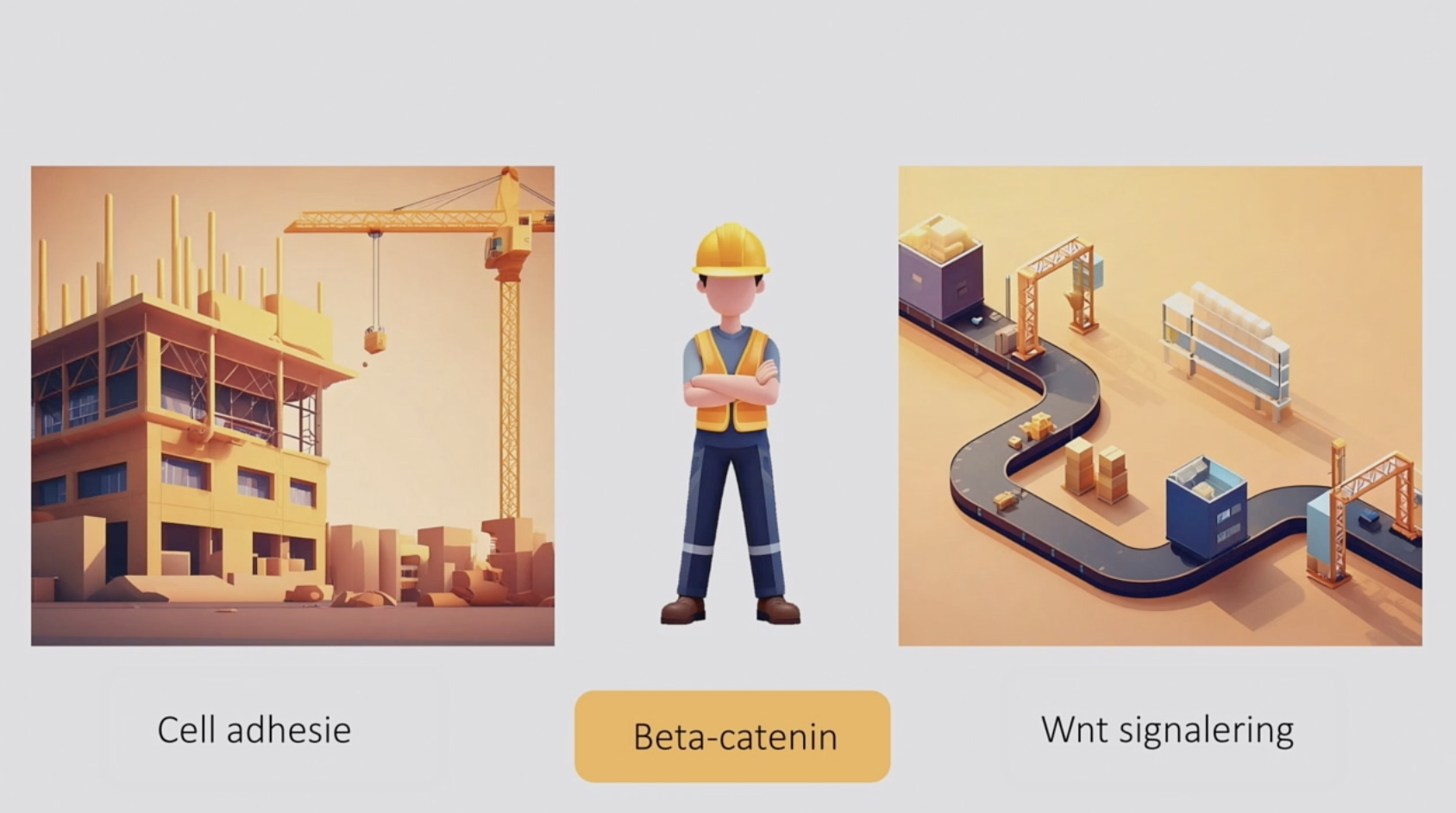
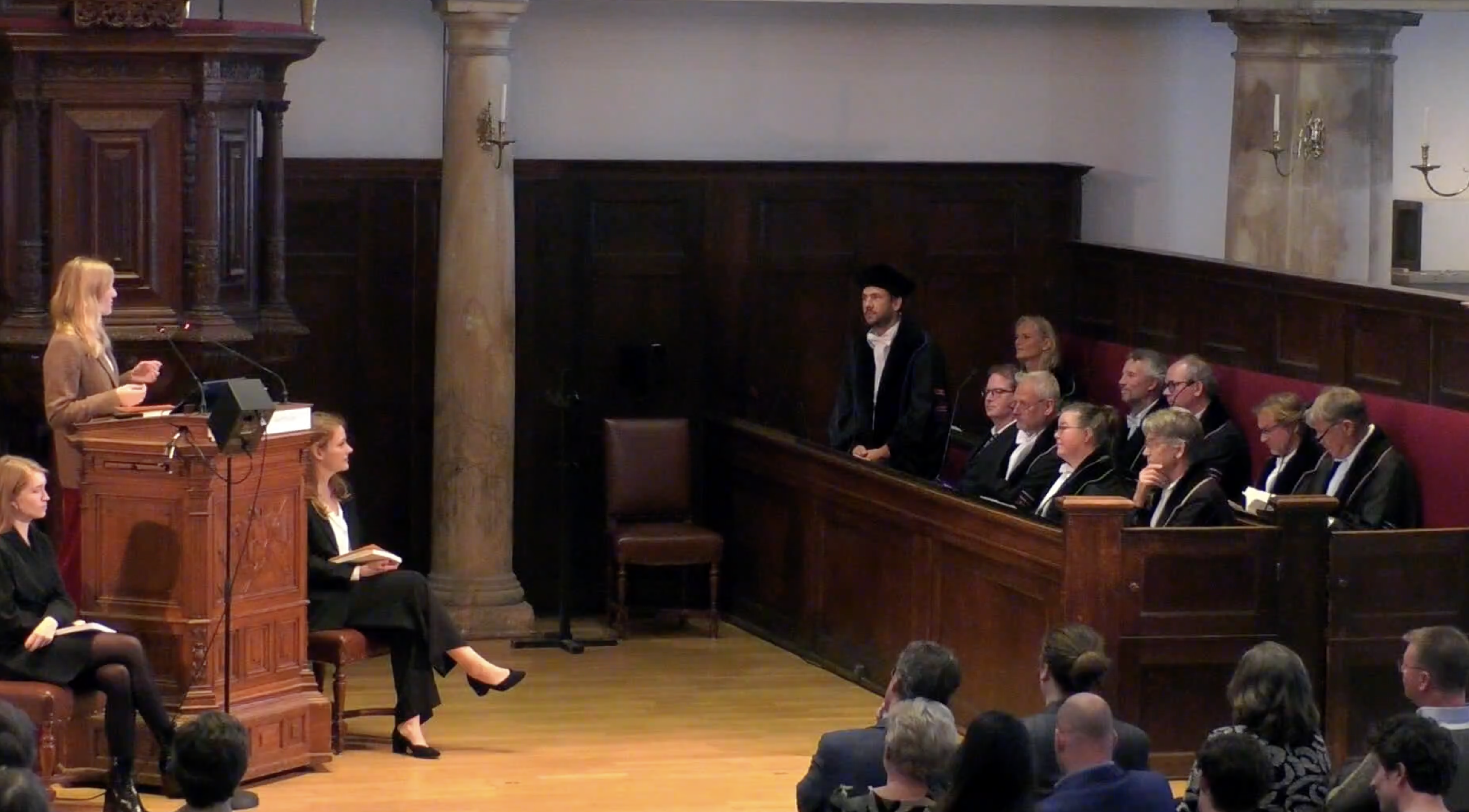
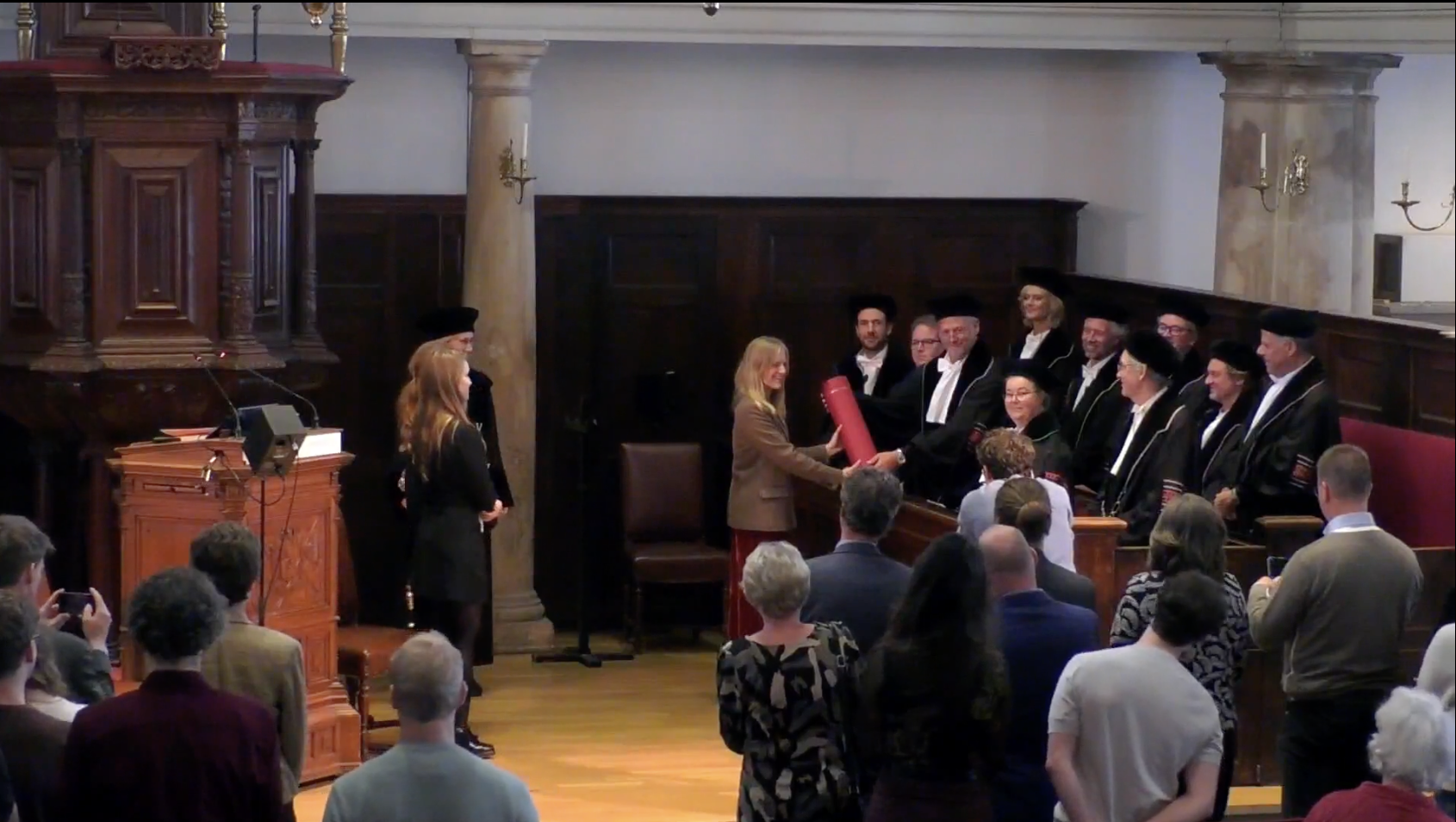
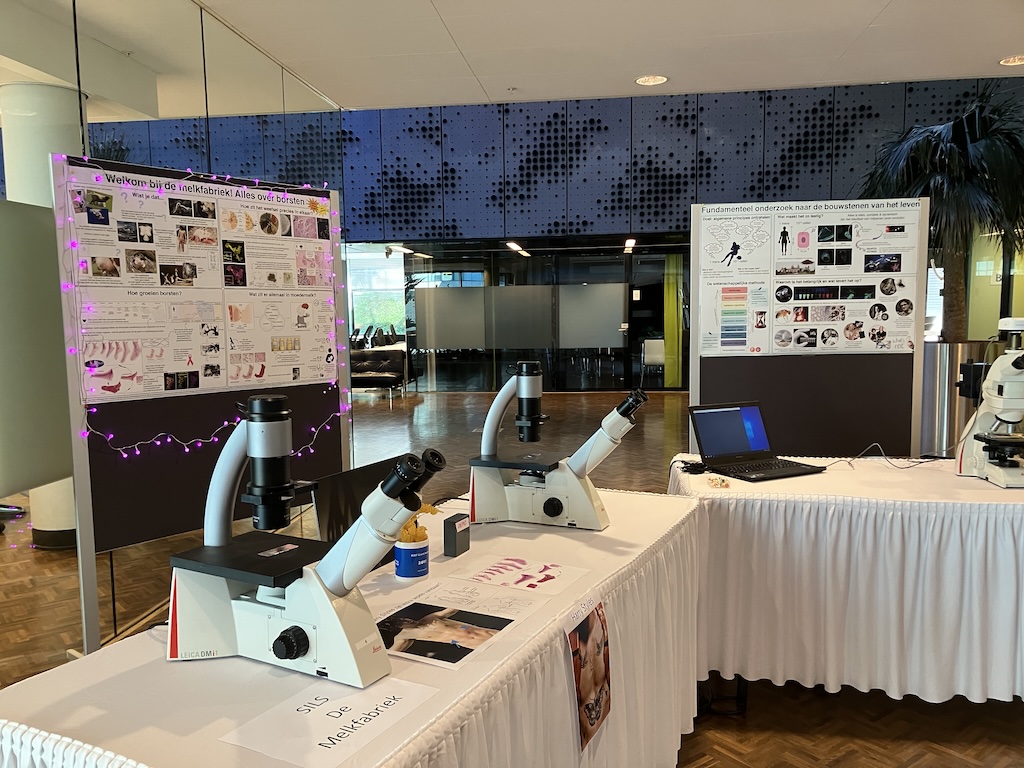
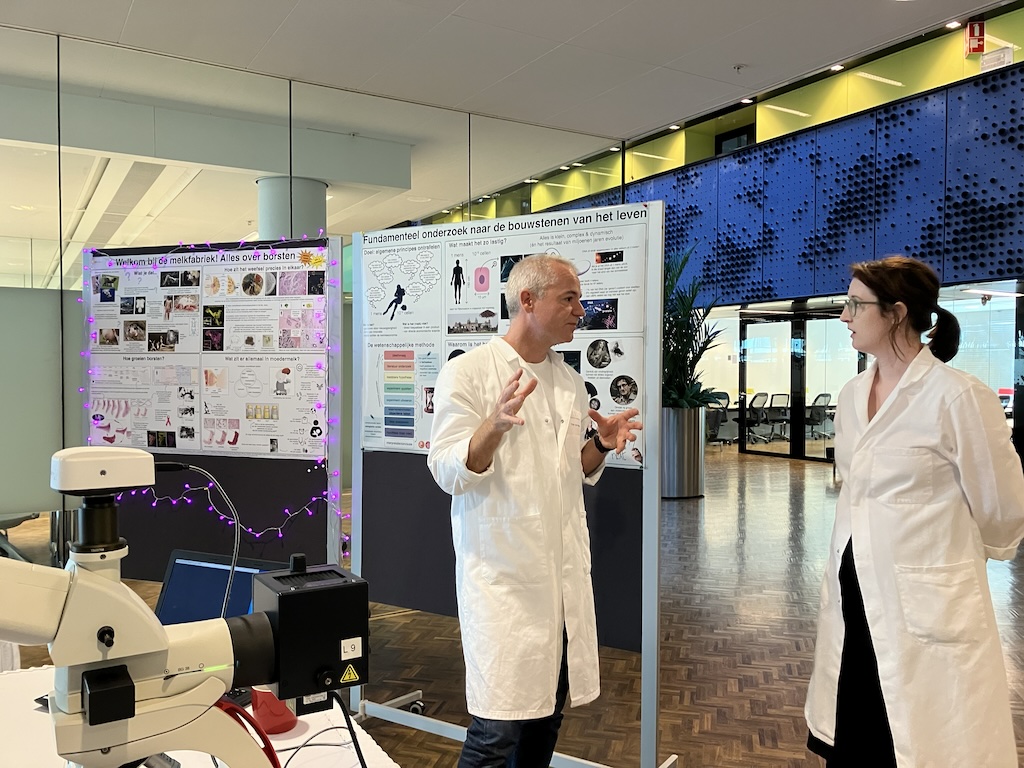
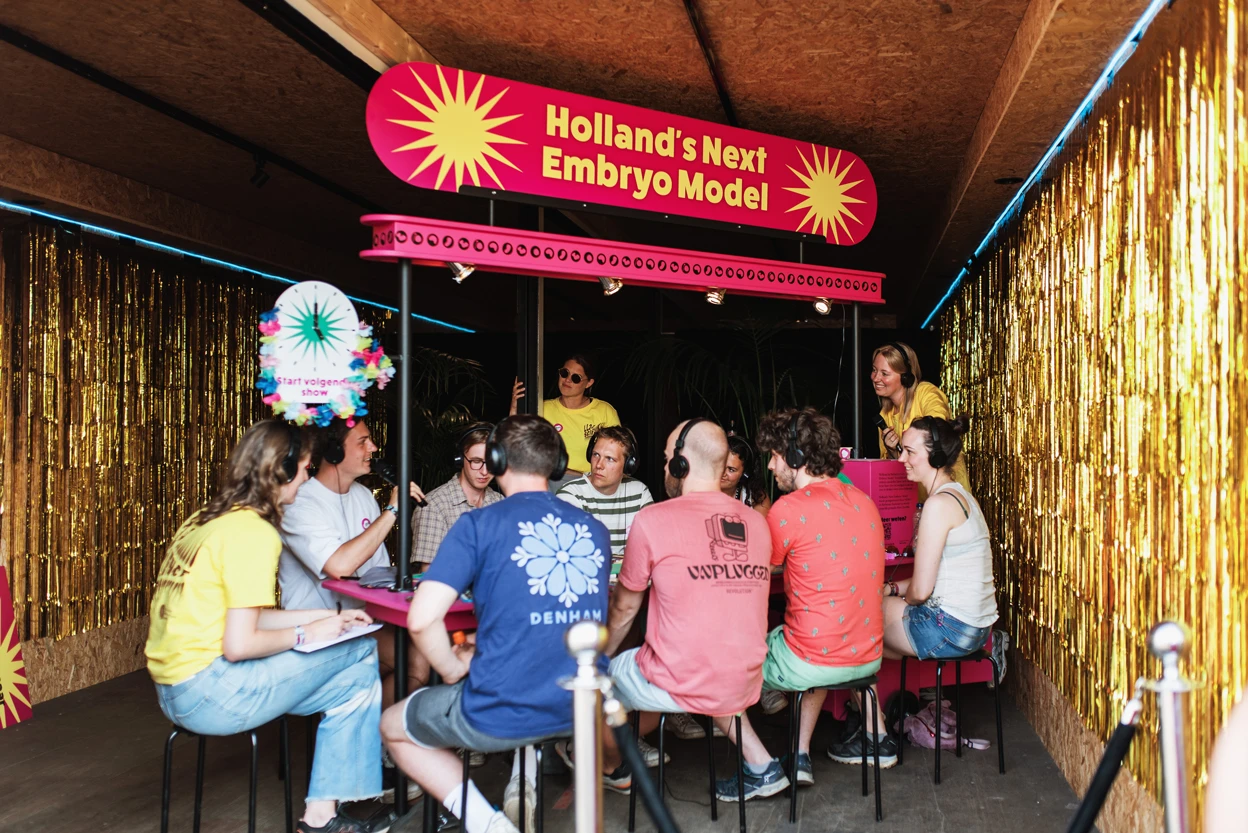
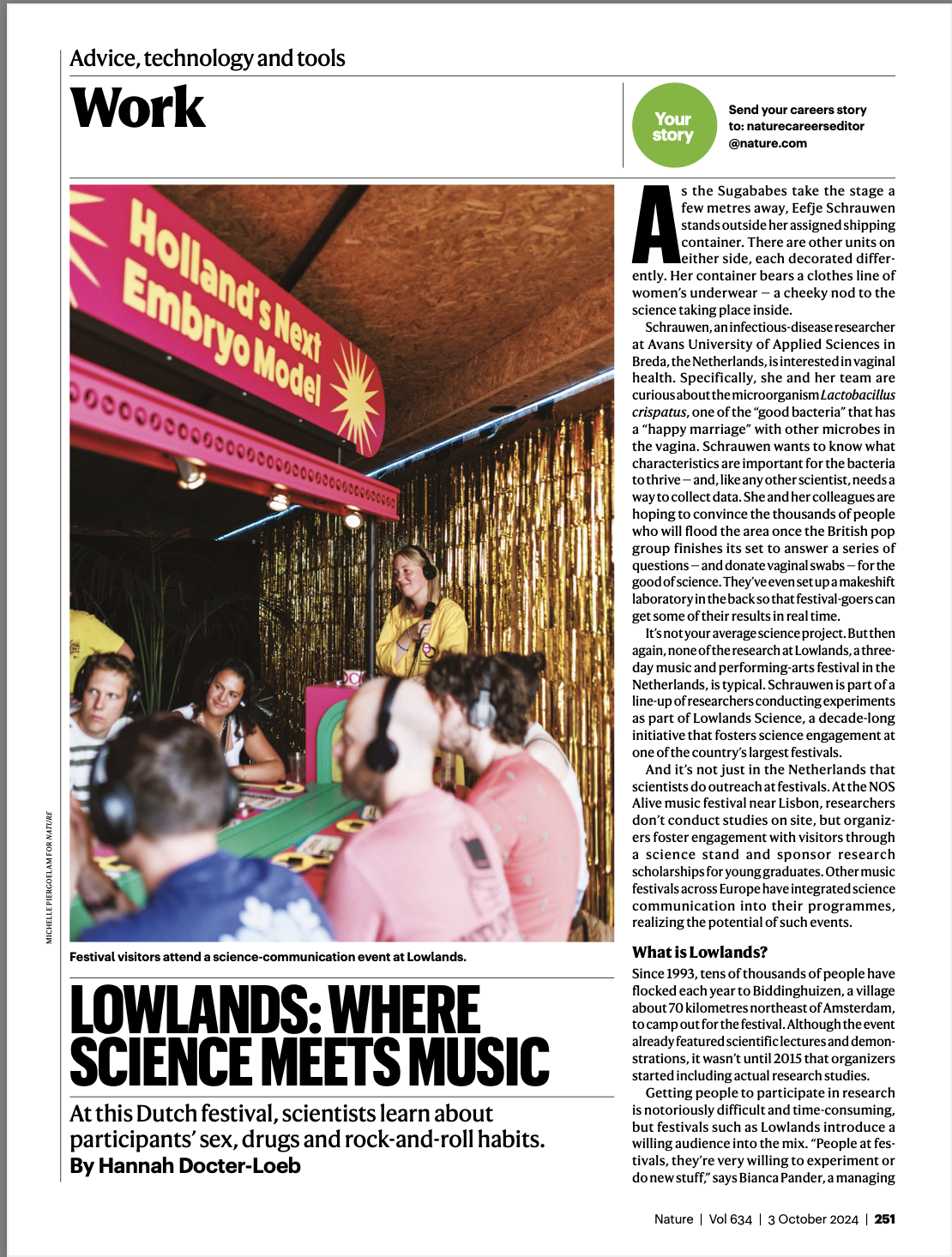
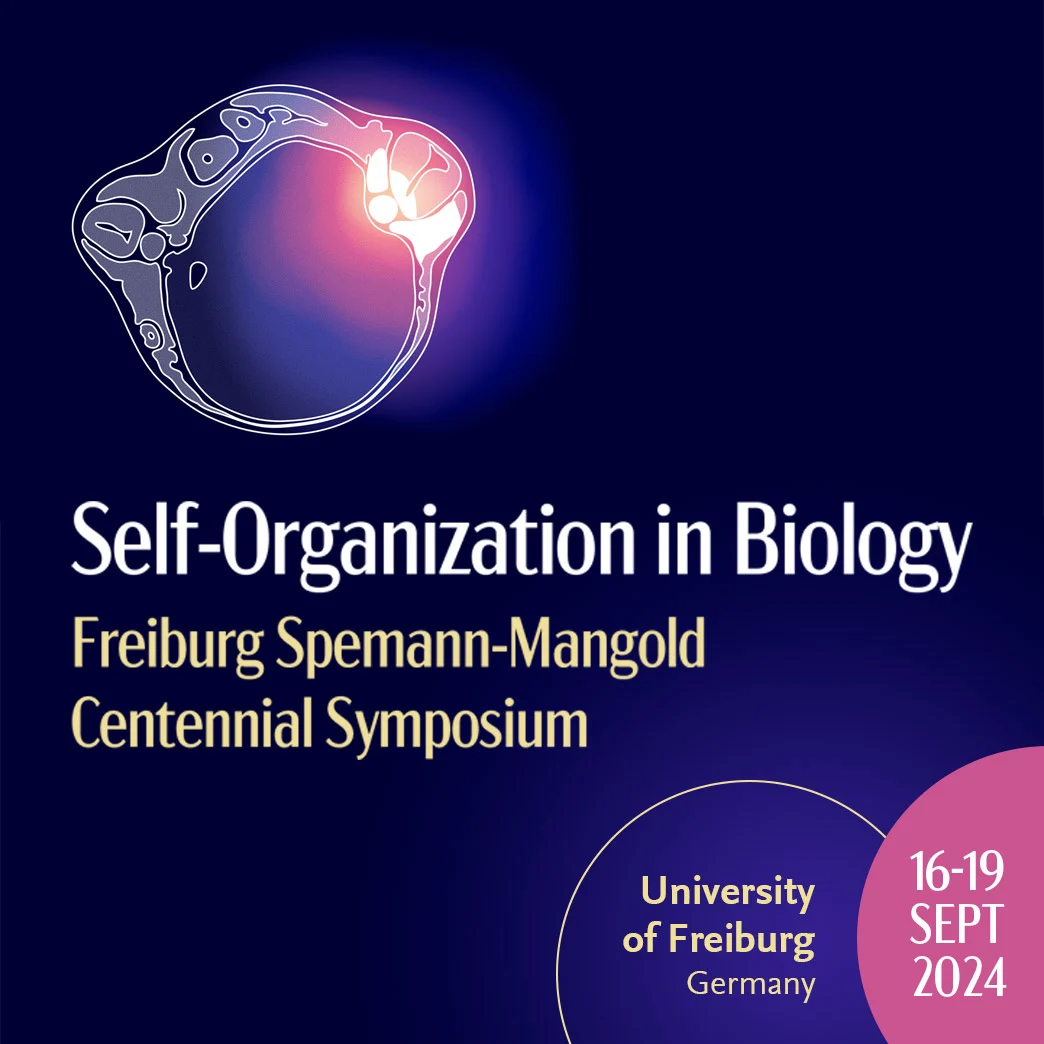
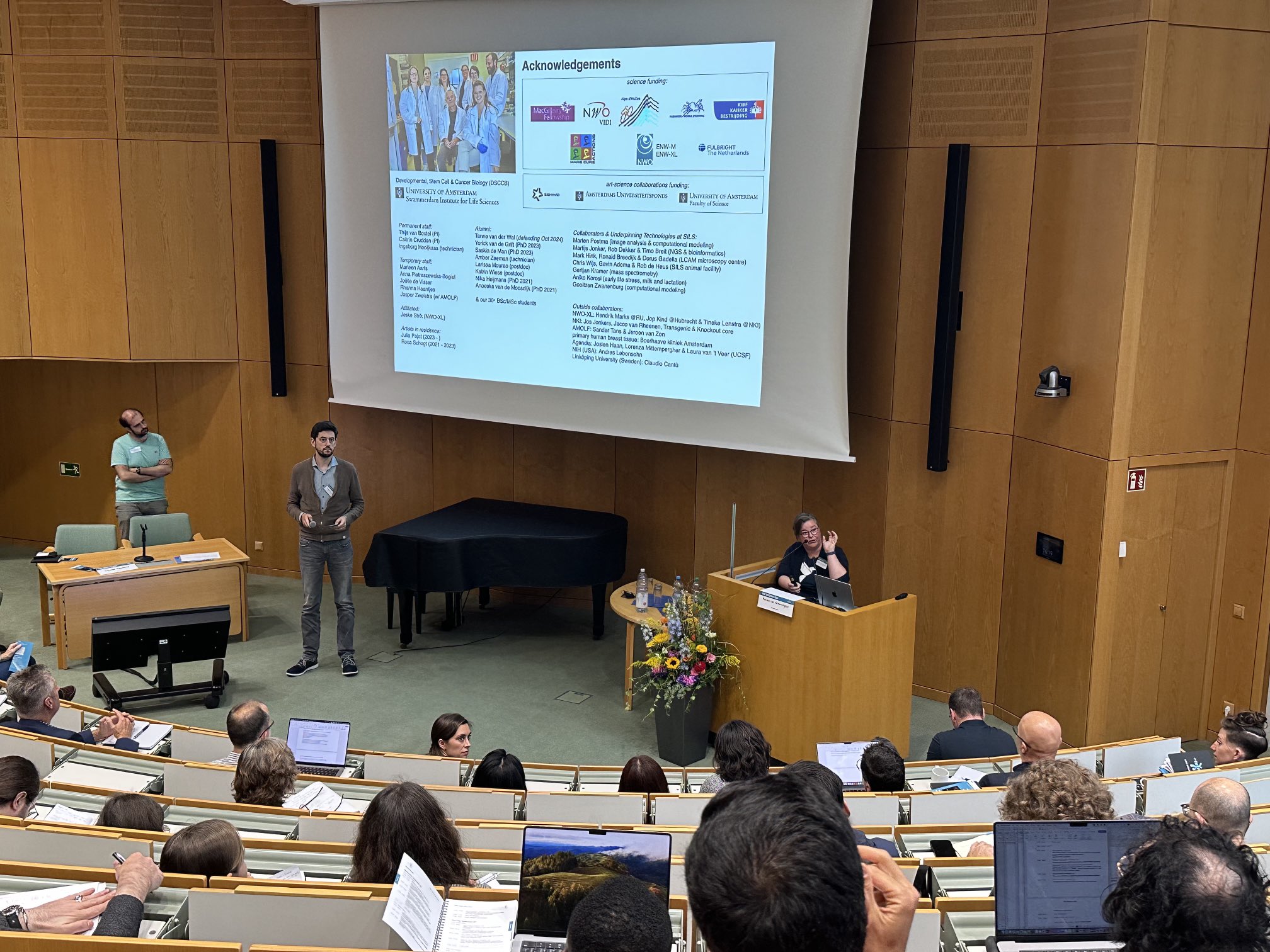
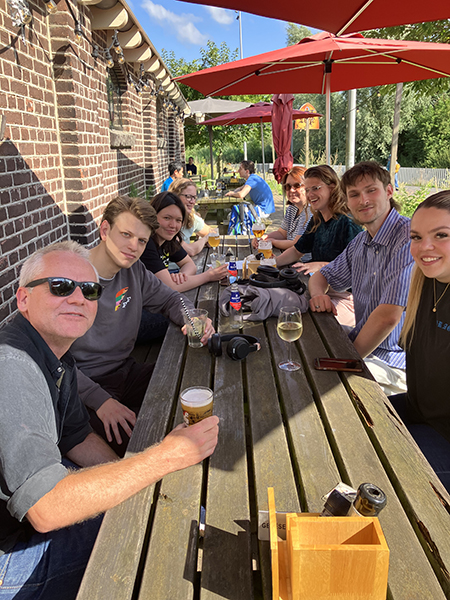

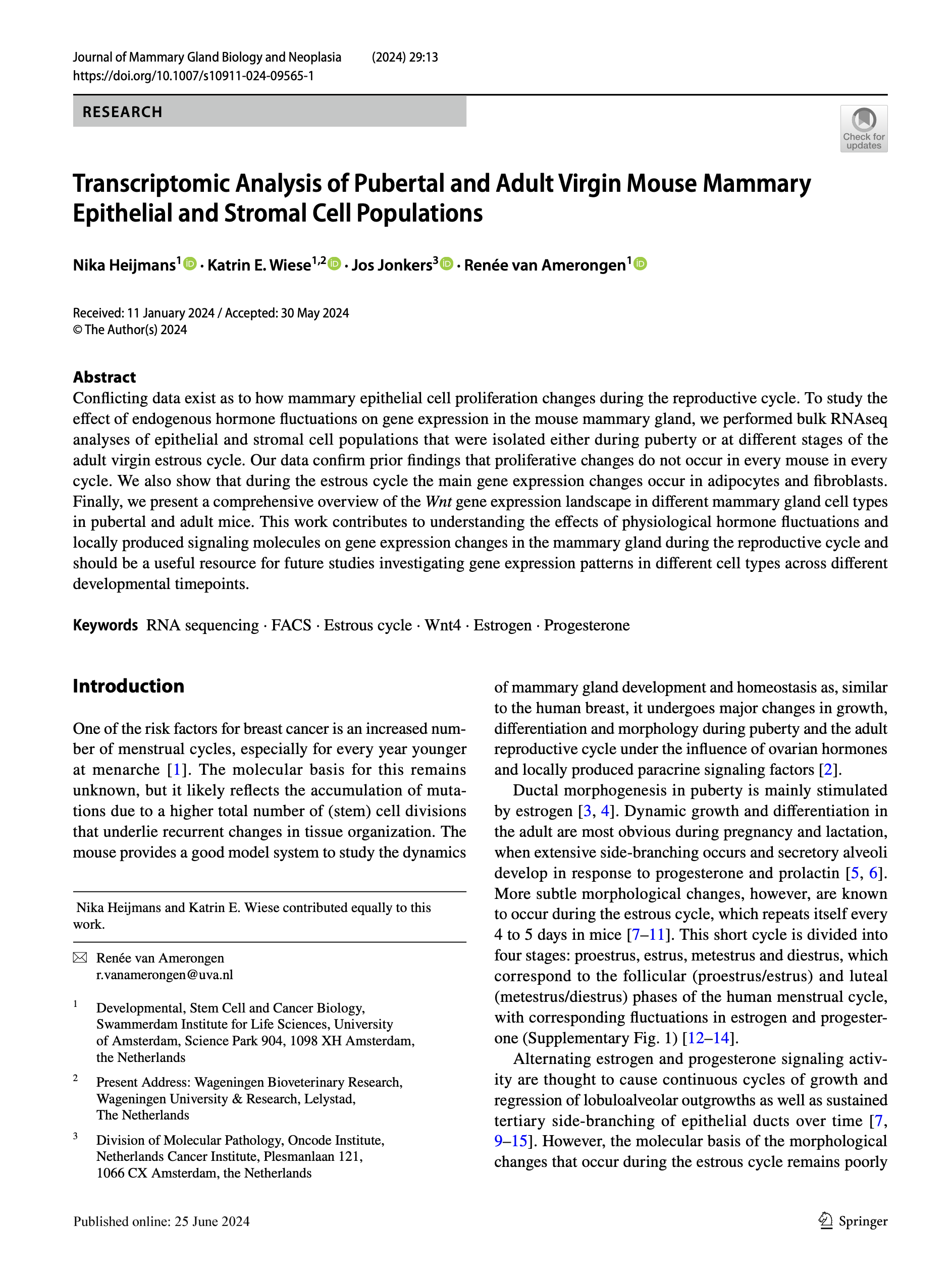
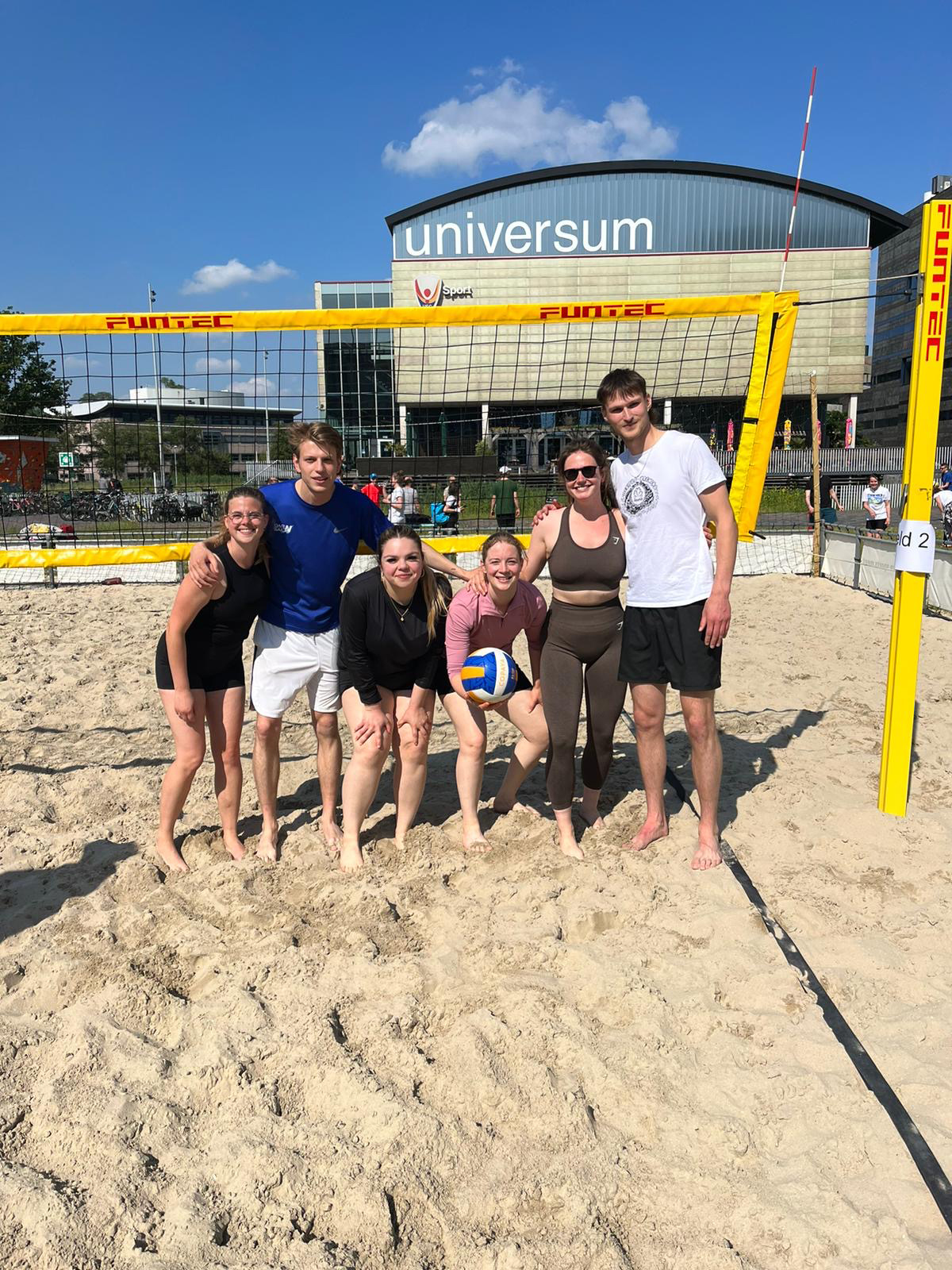
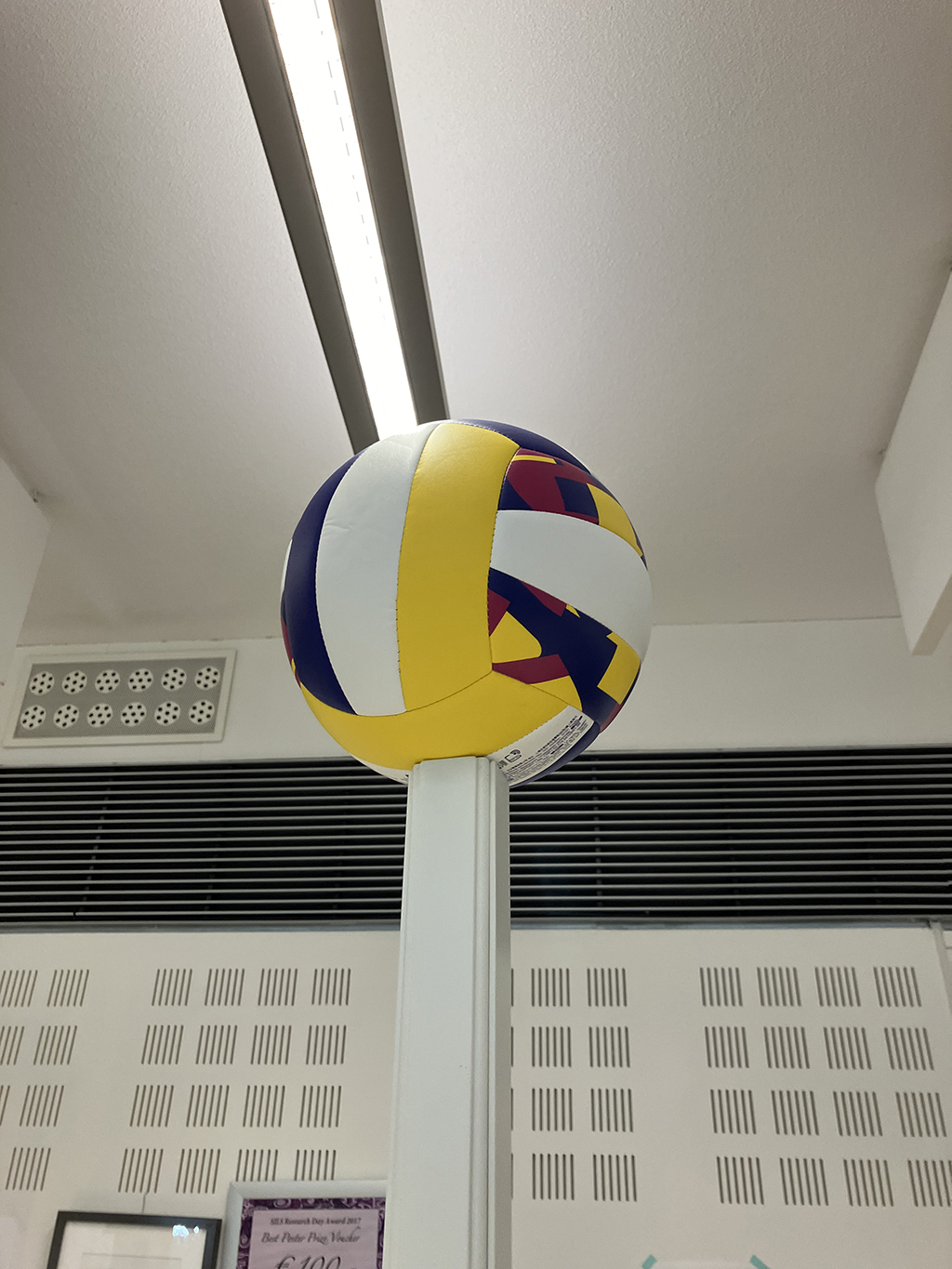
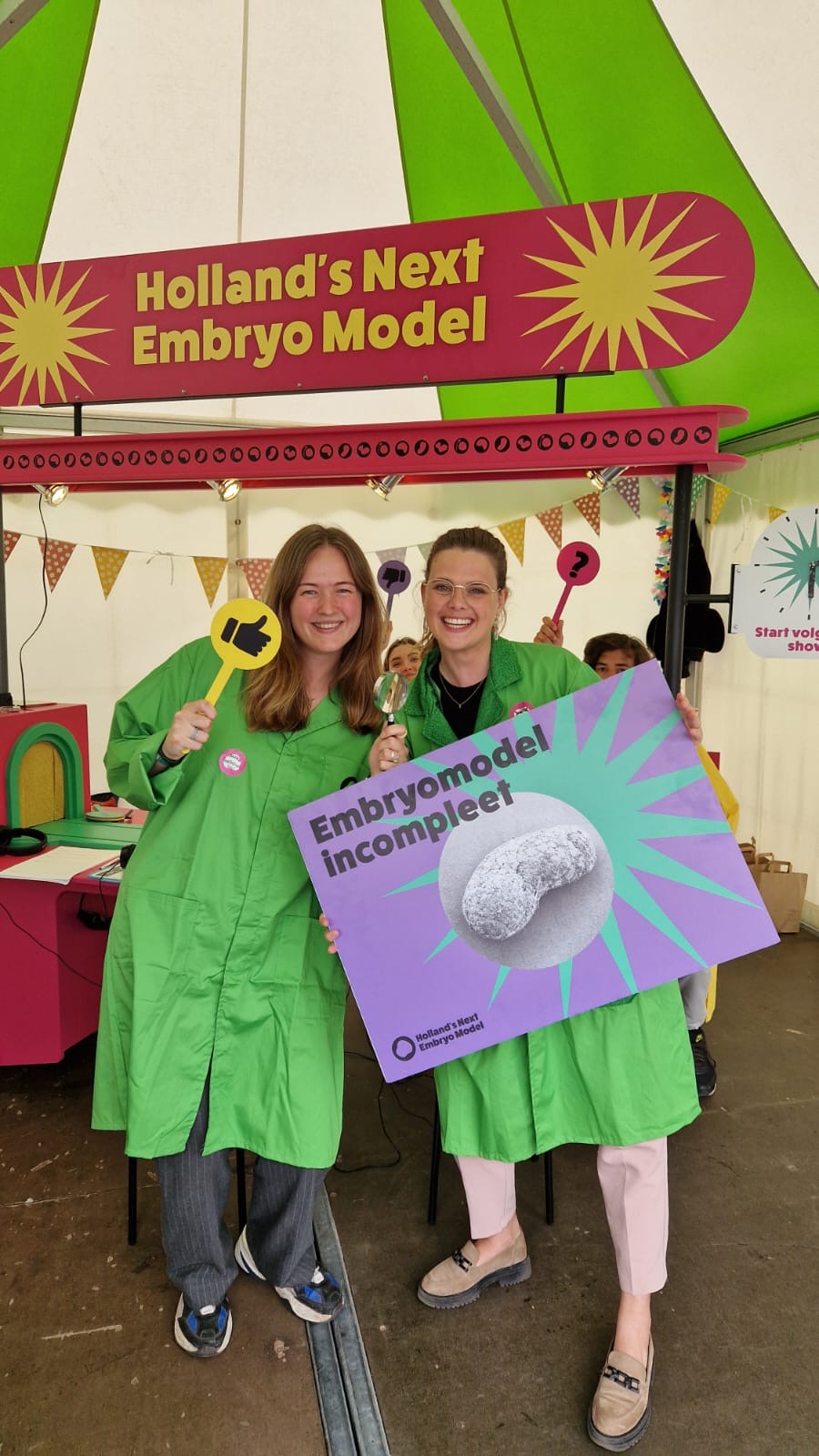
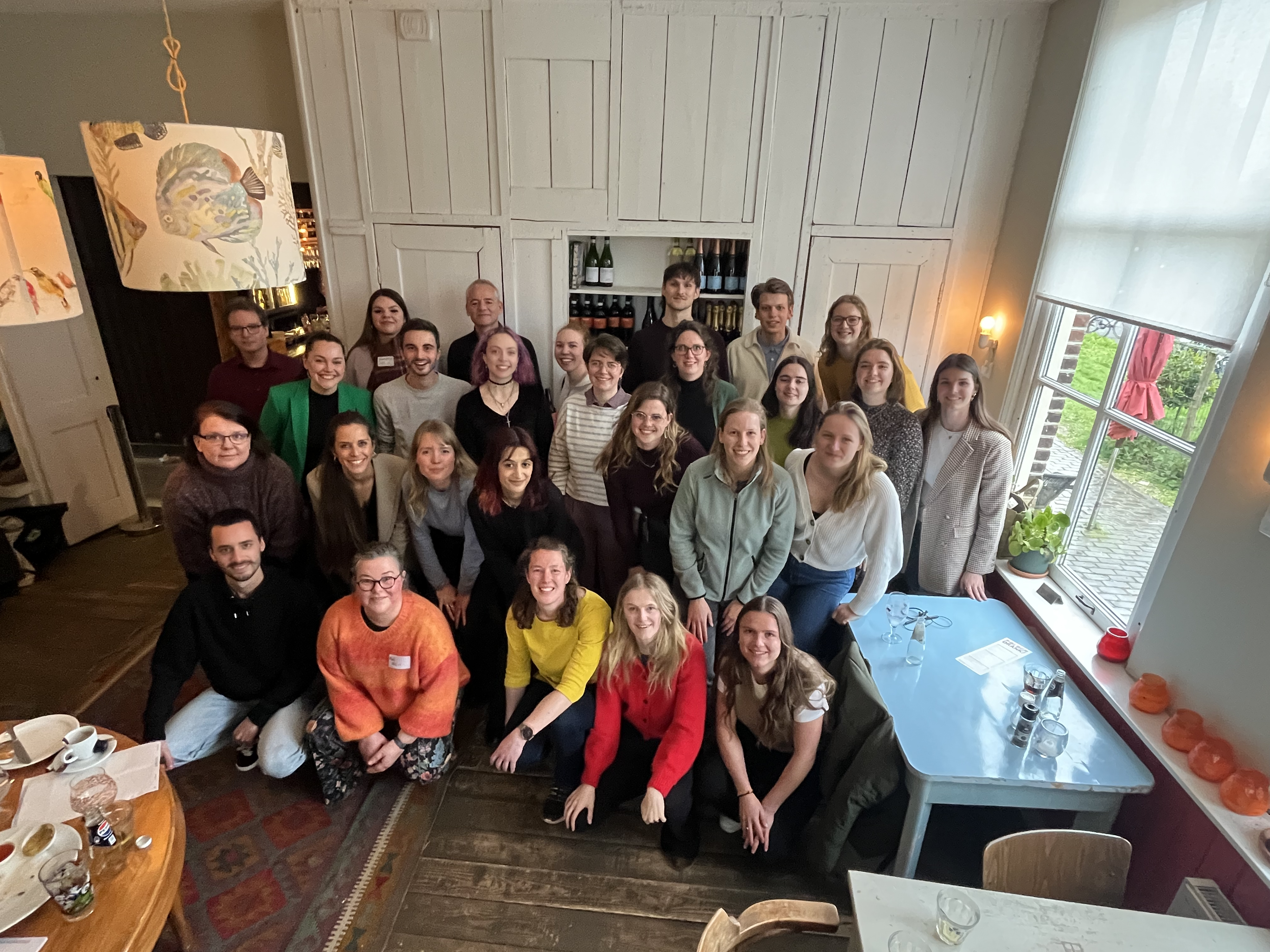
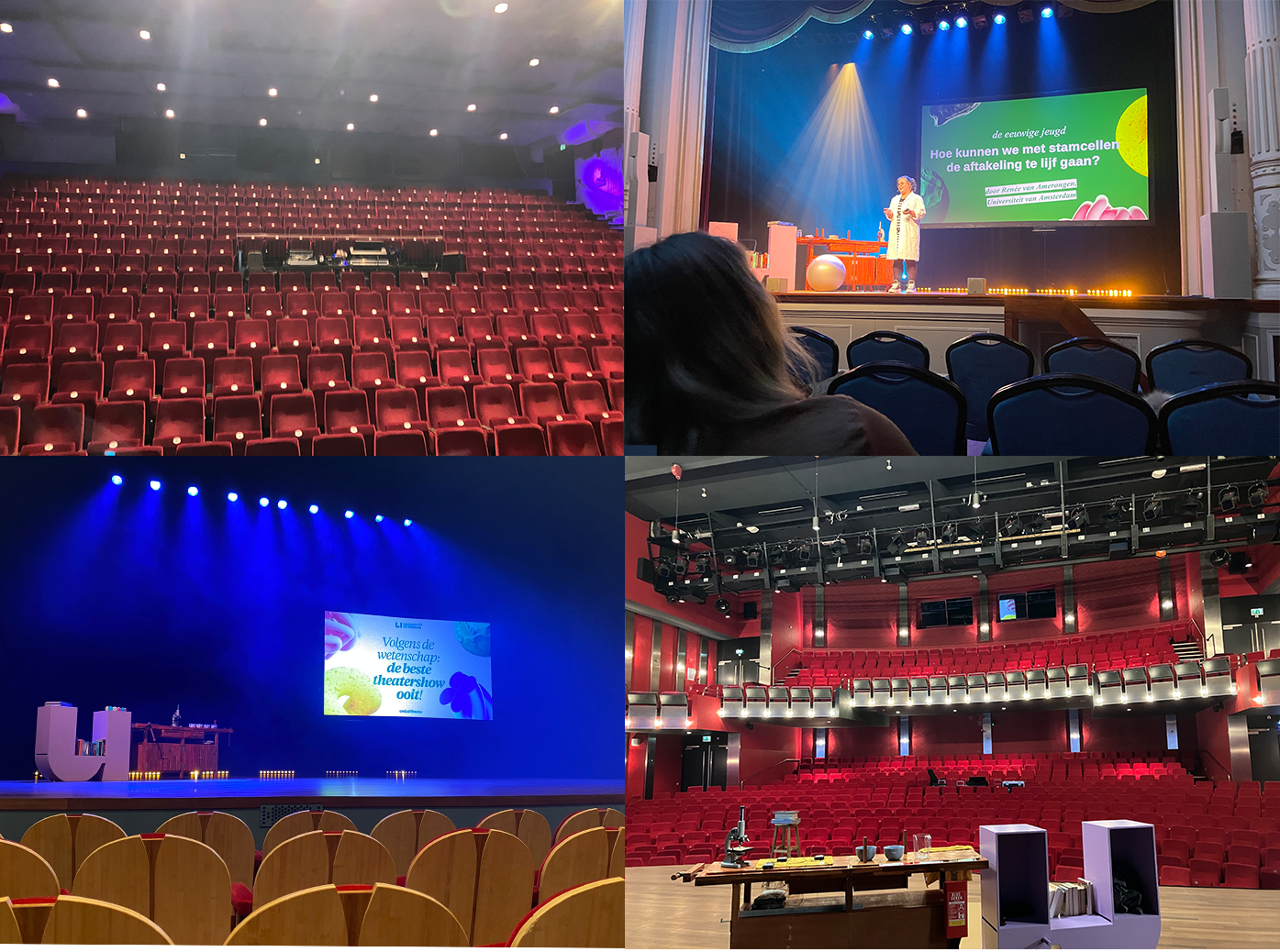
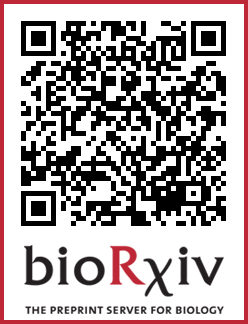









 Congratulations Yorick!
Congratulations Yorick!























































































































































